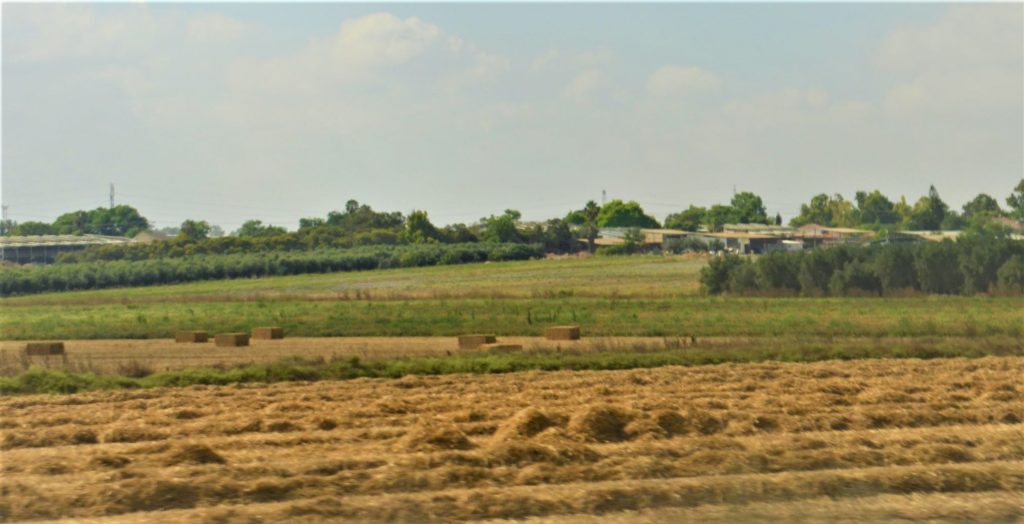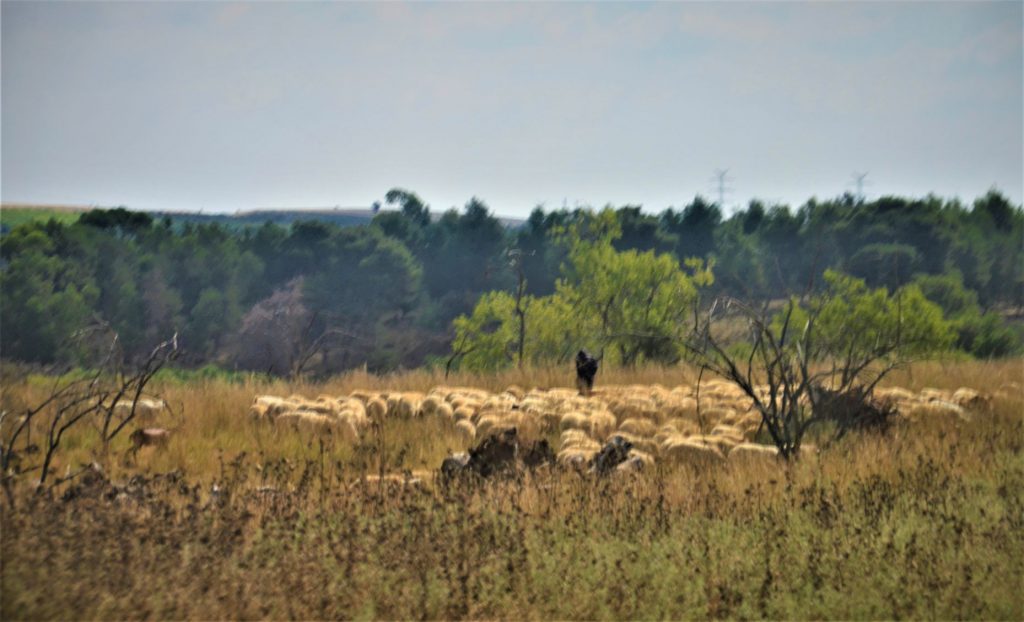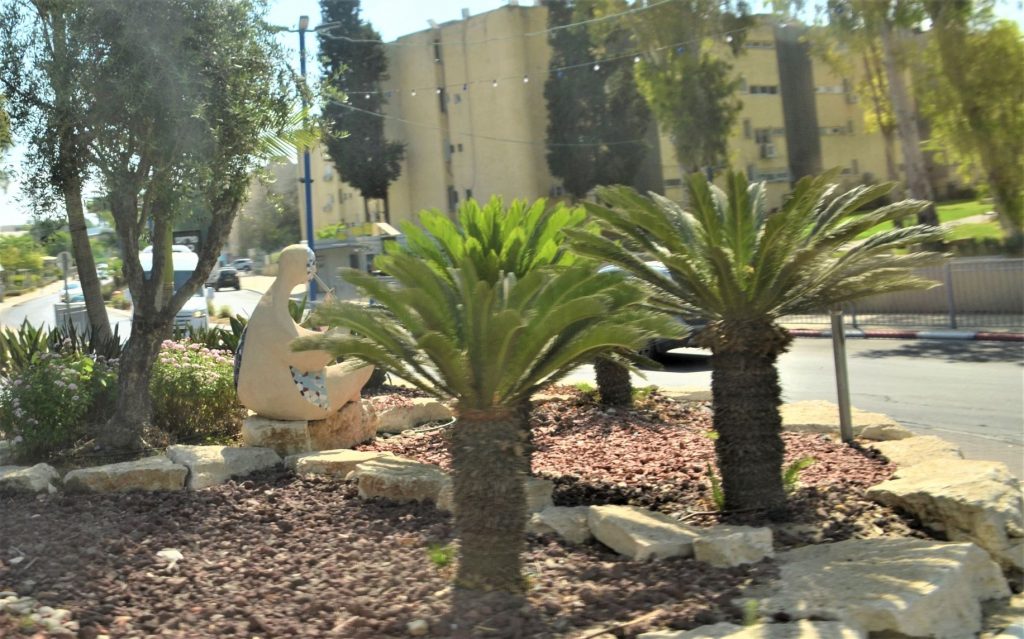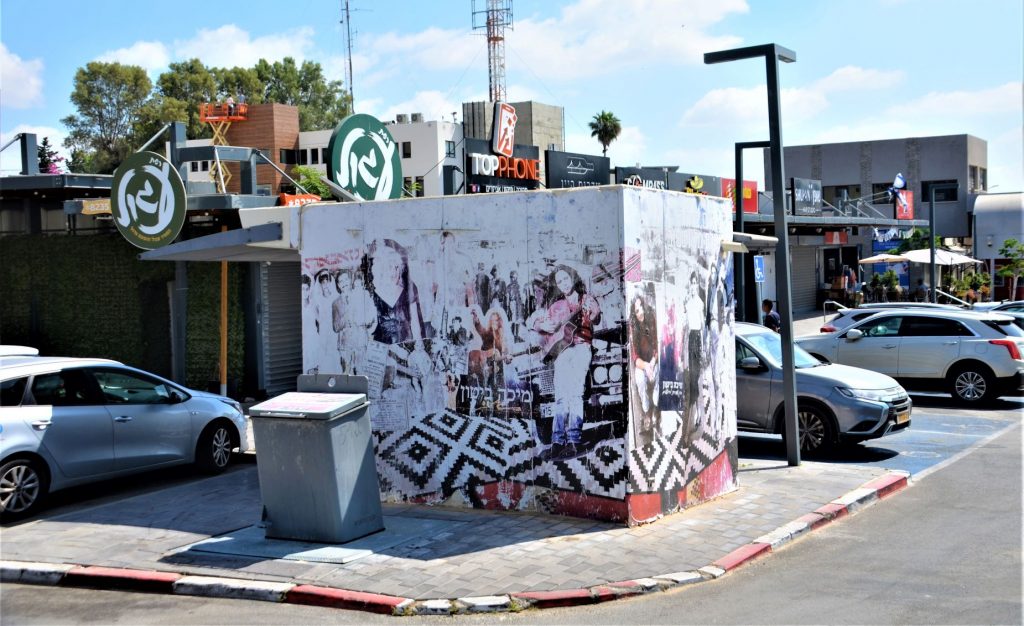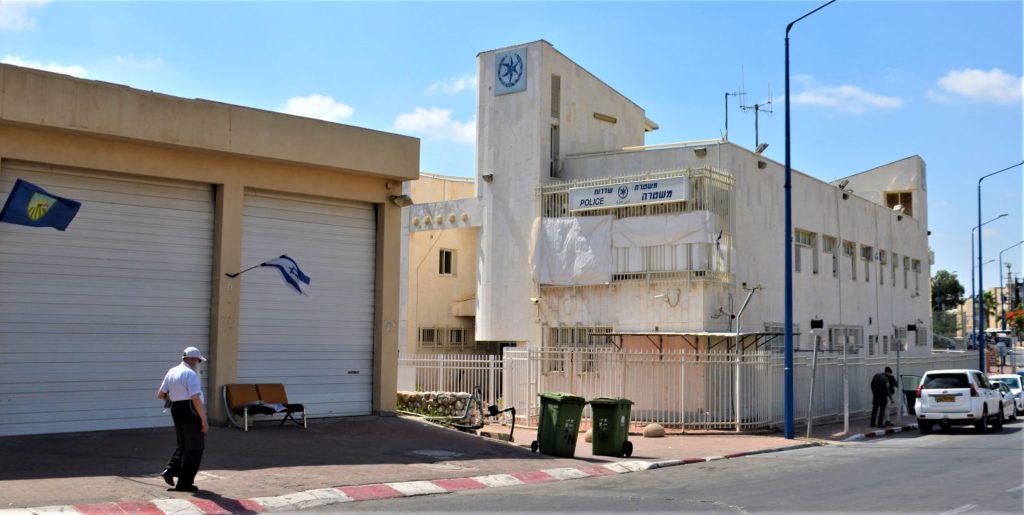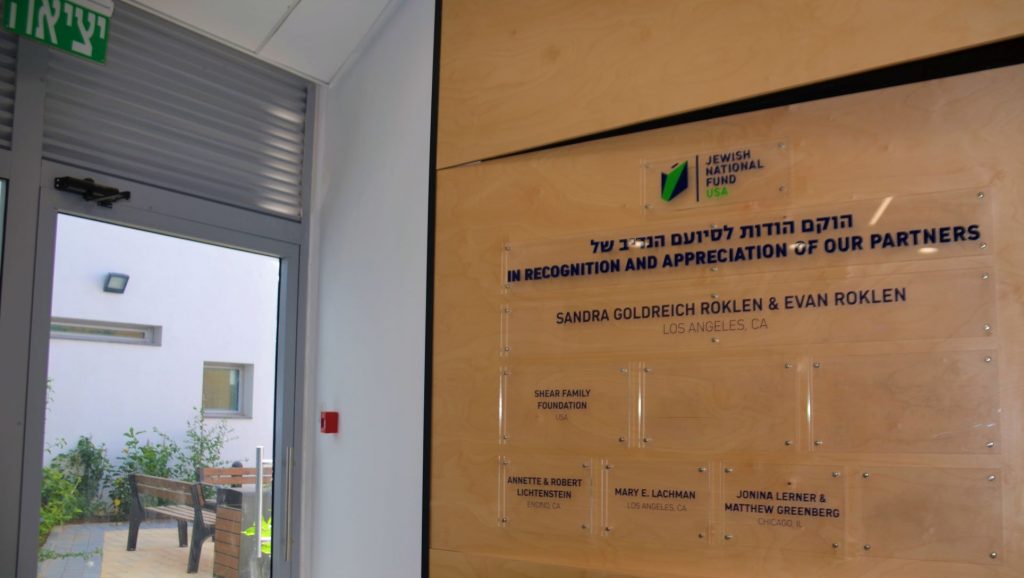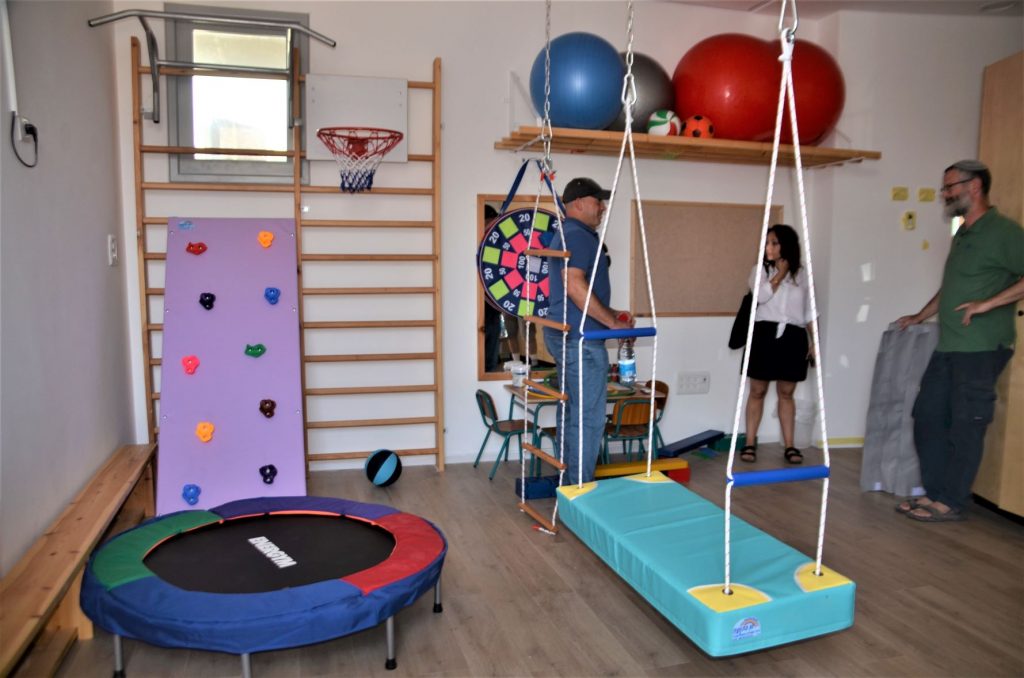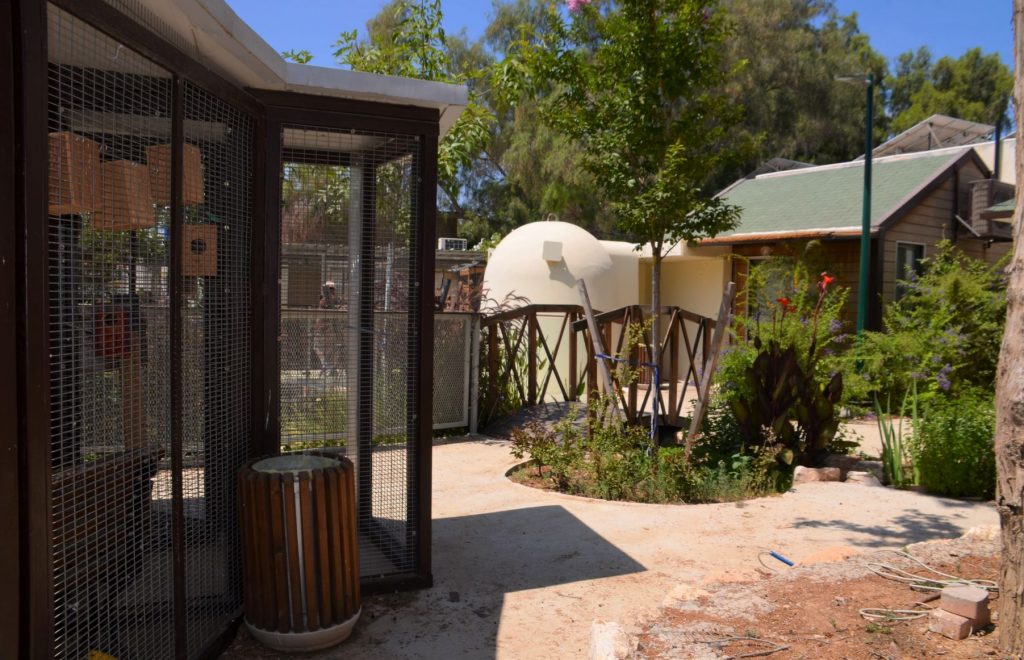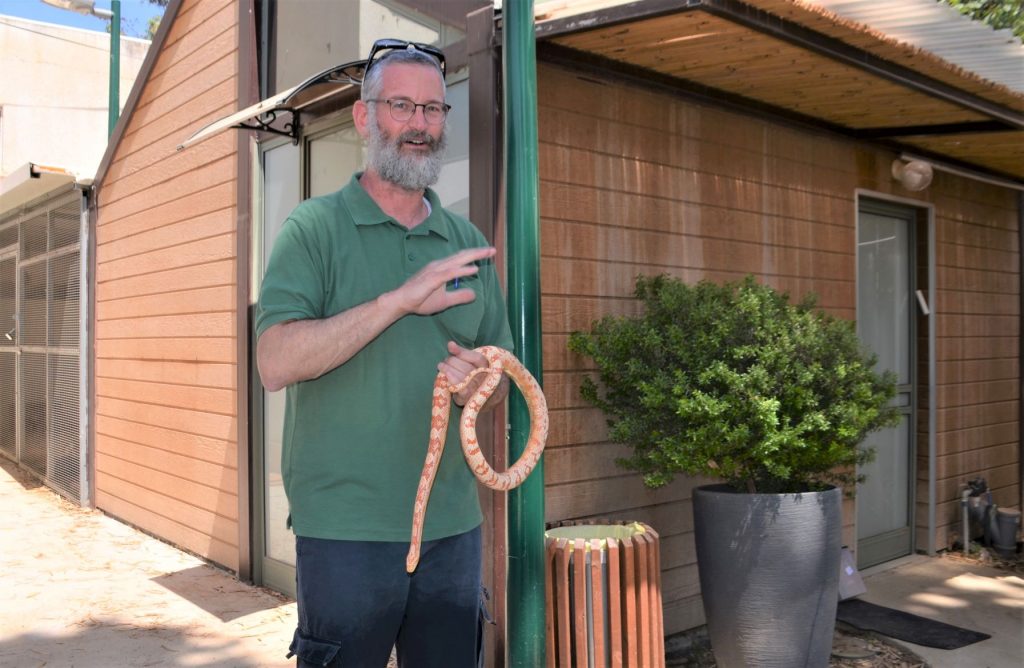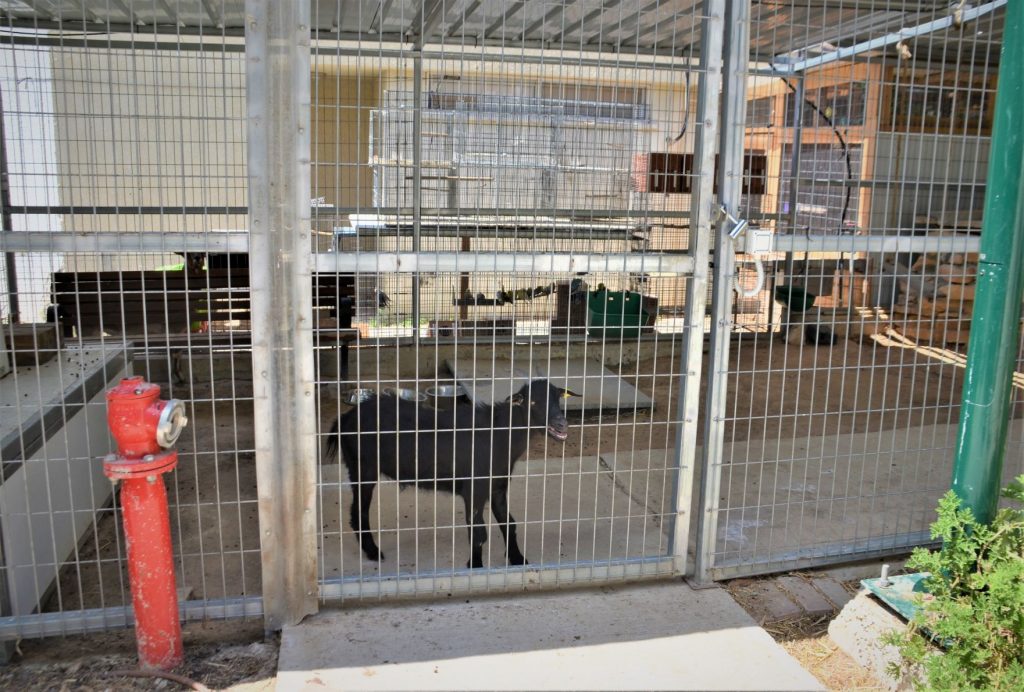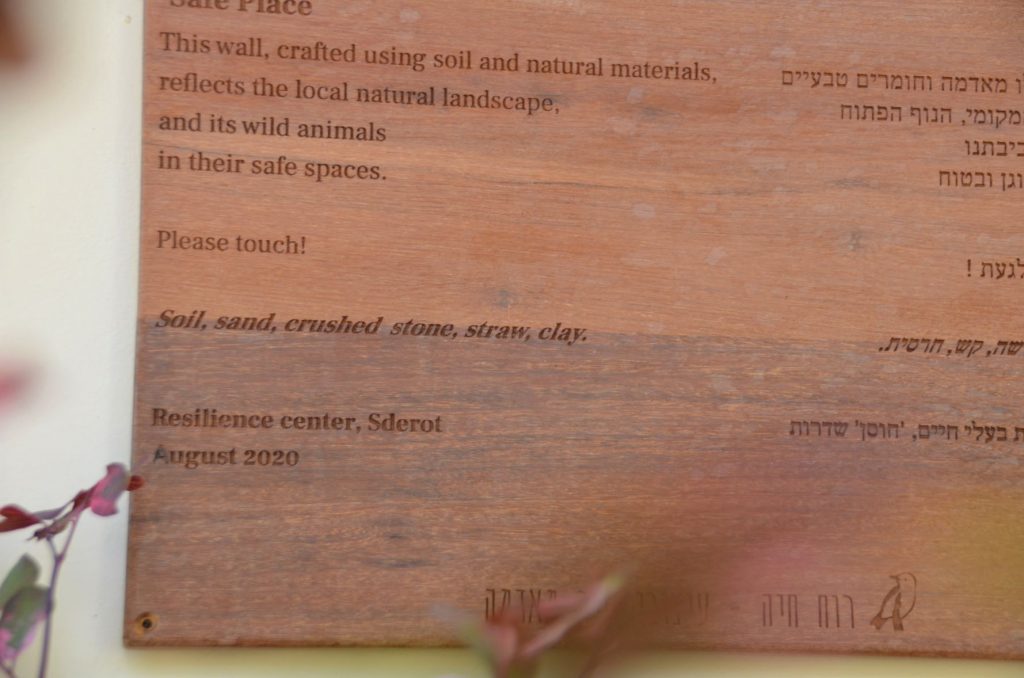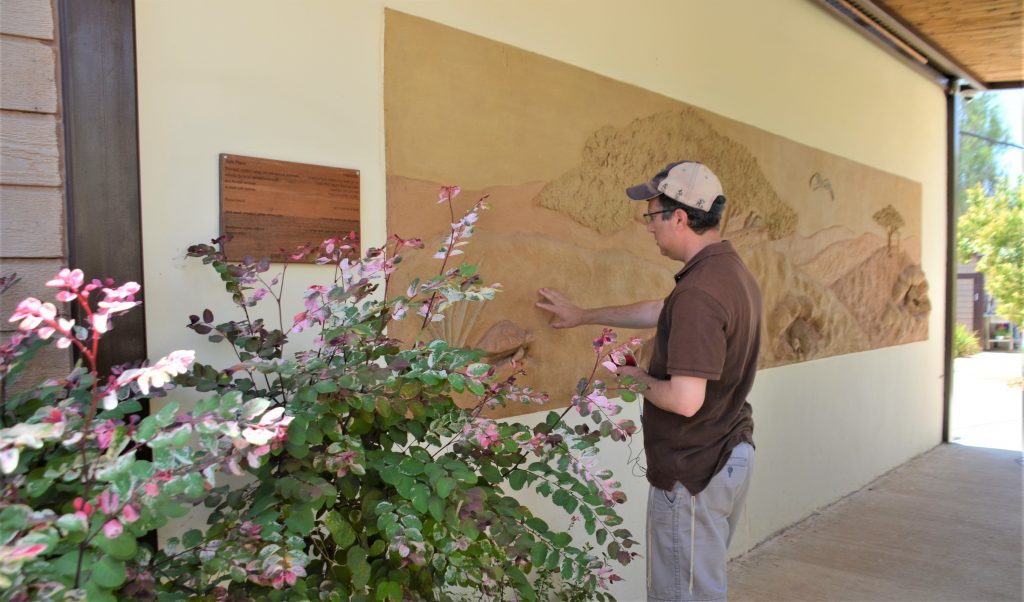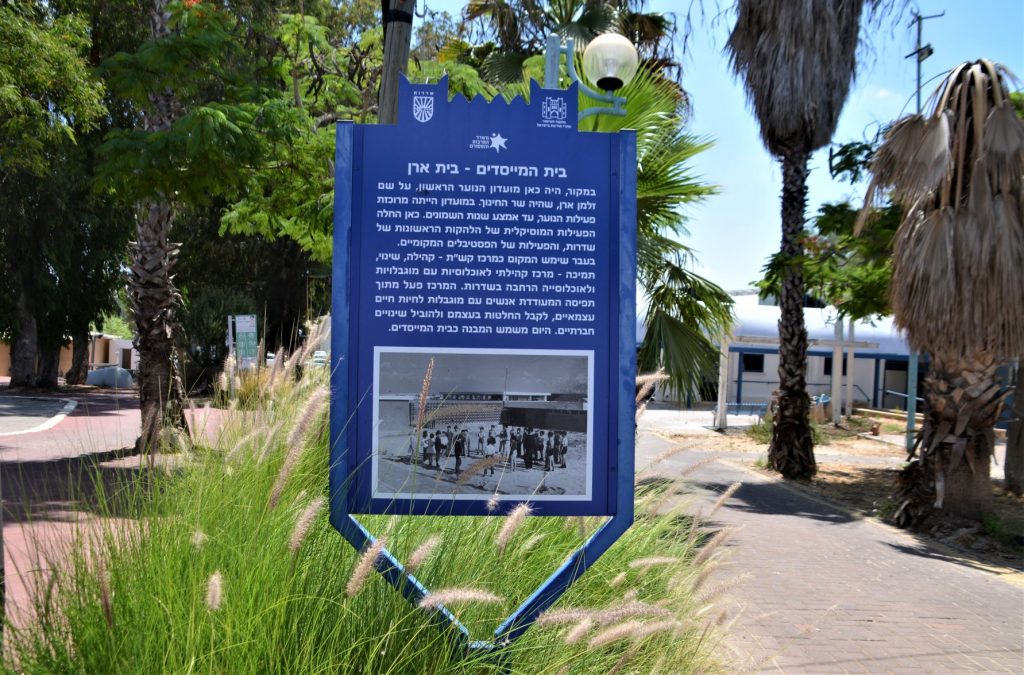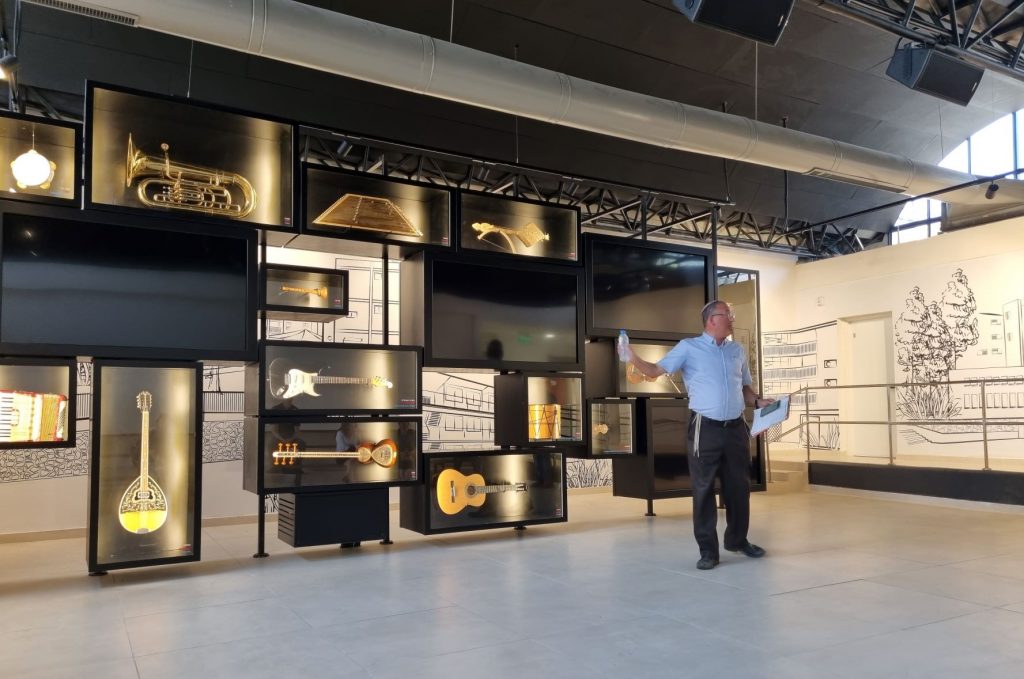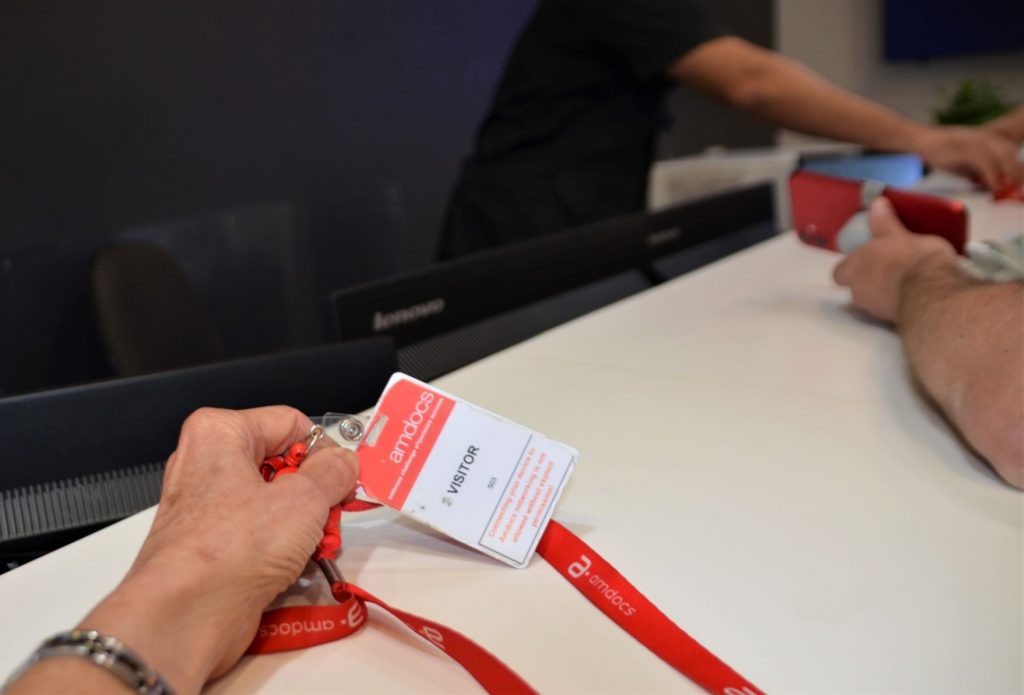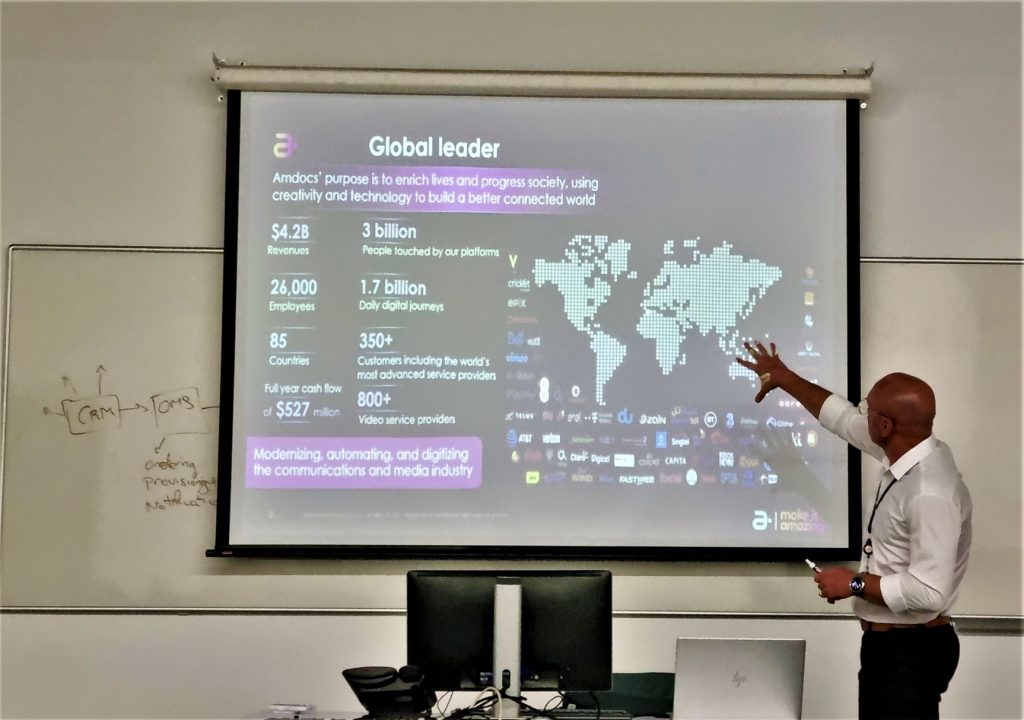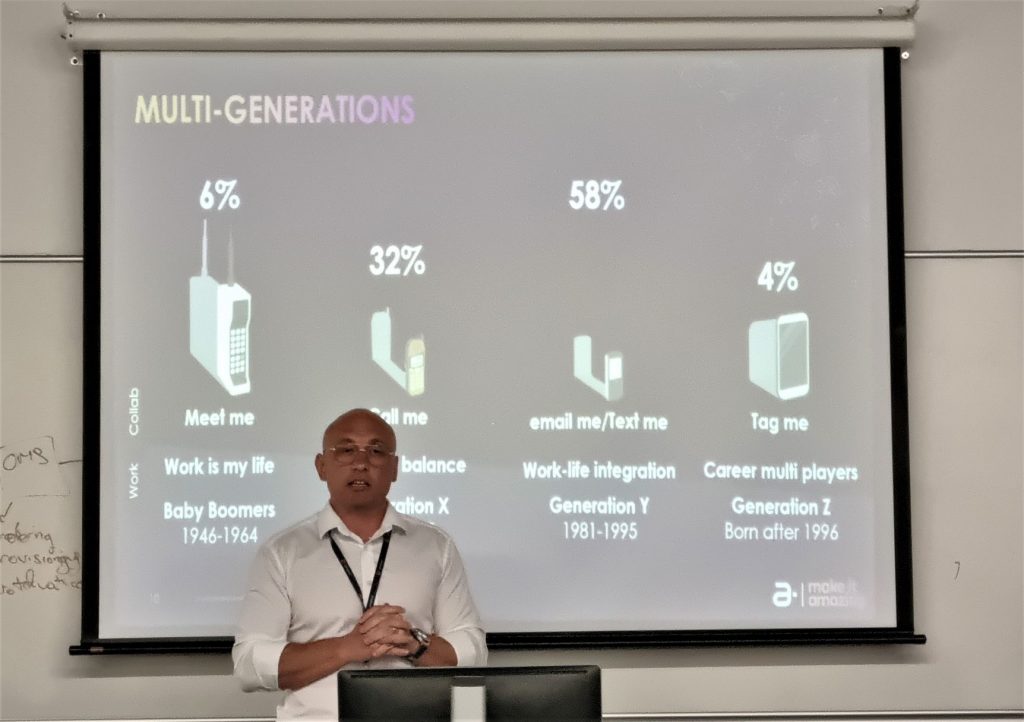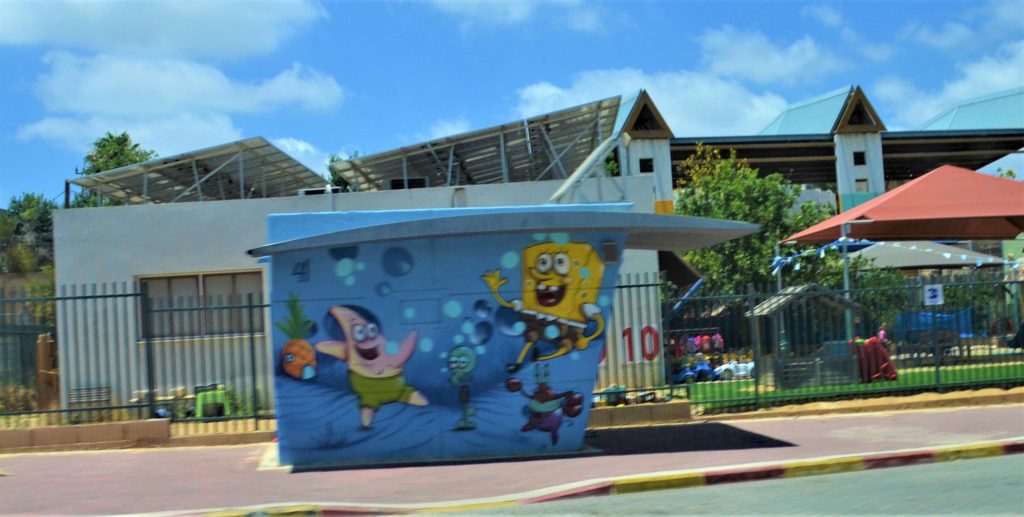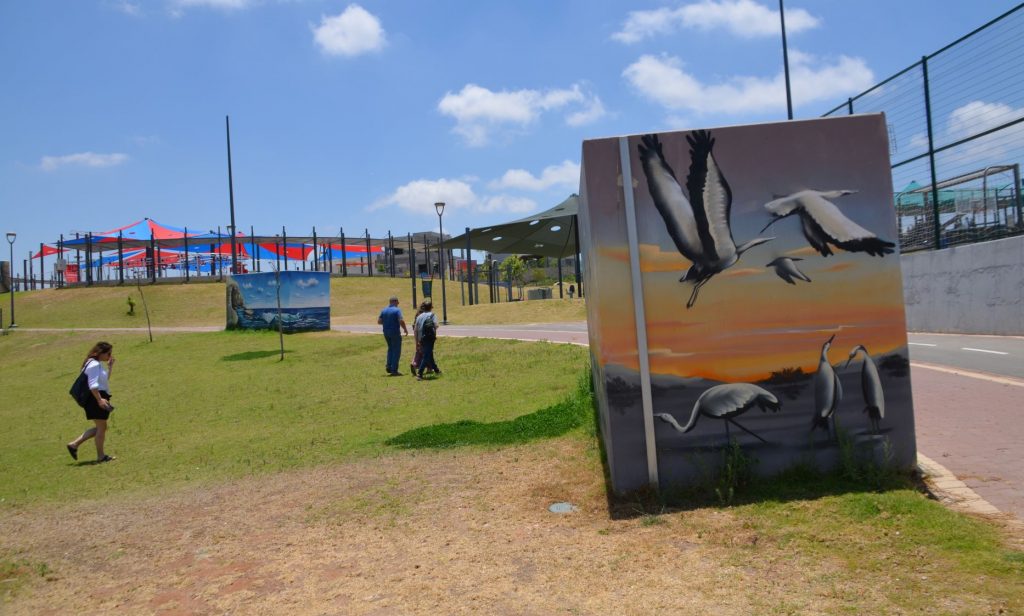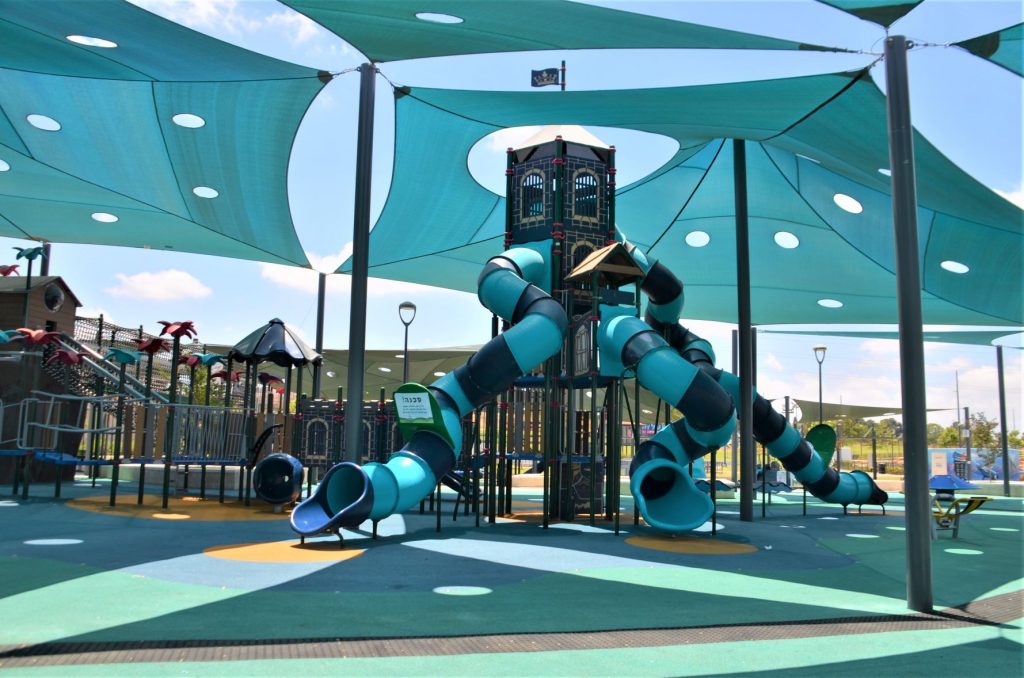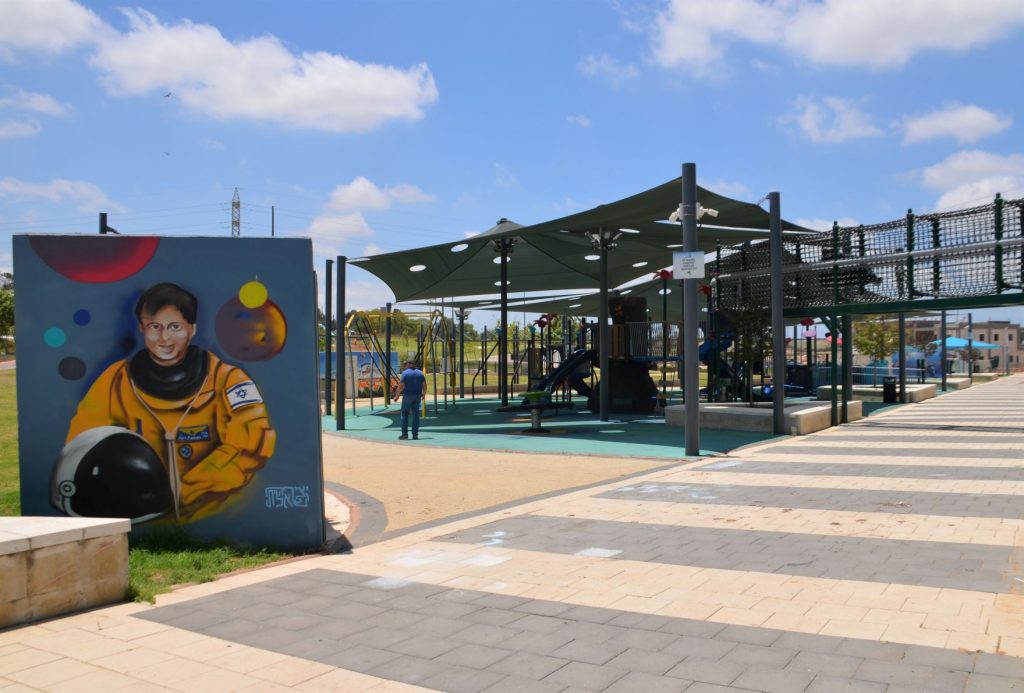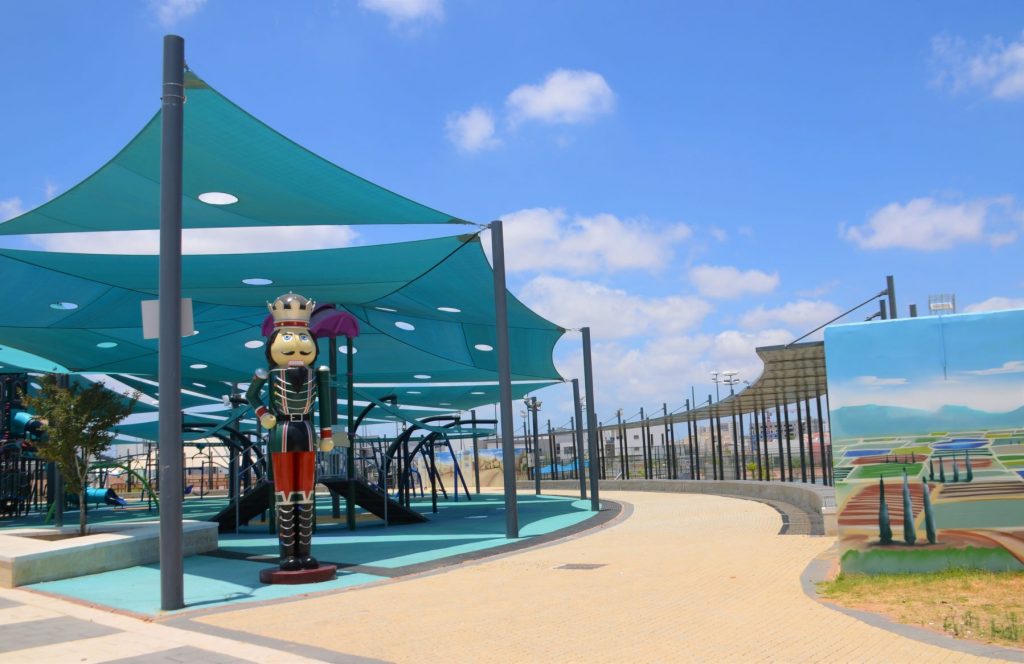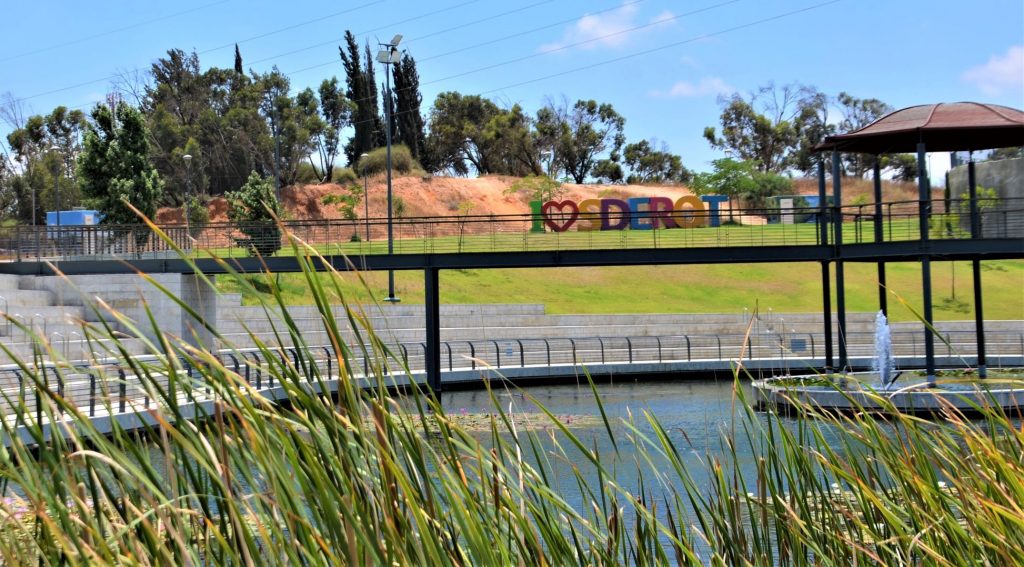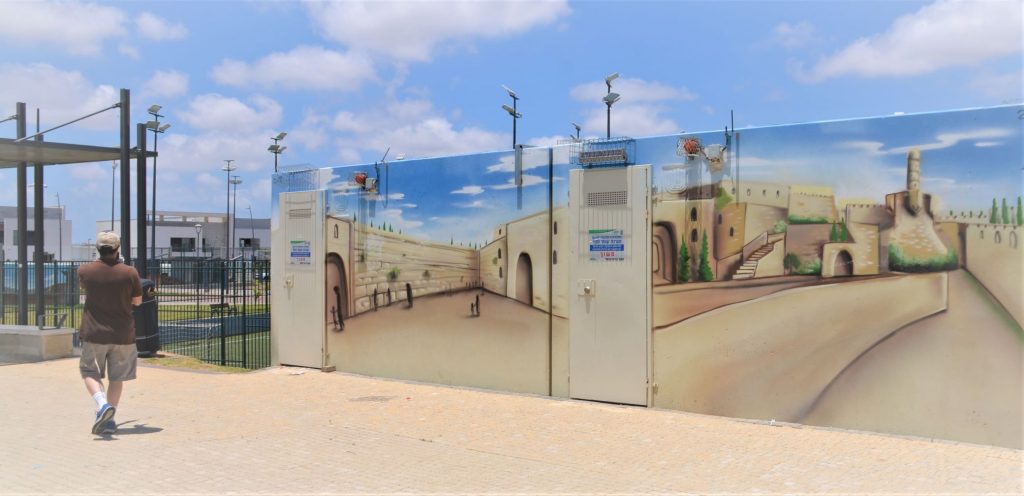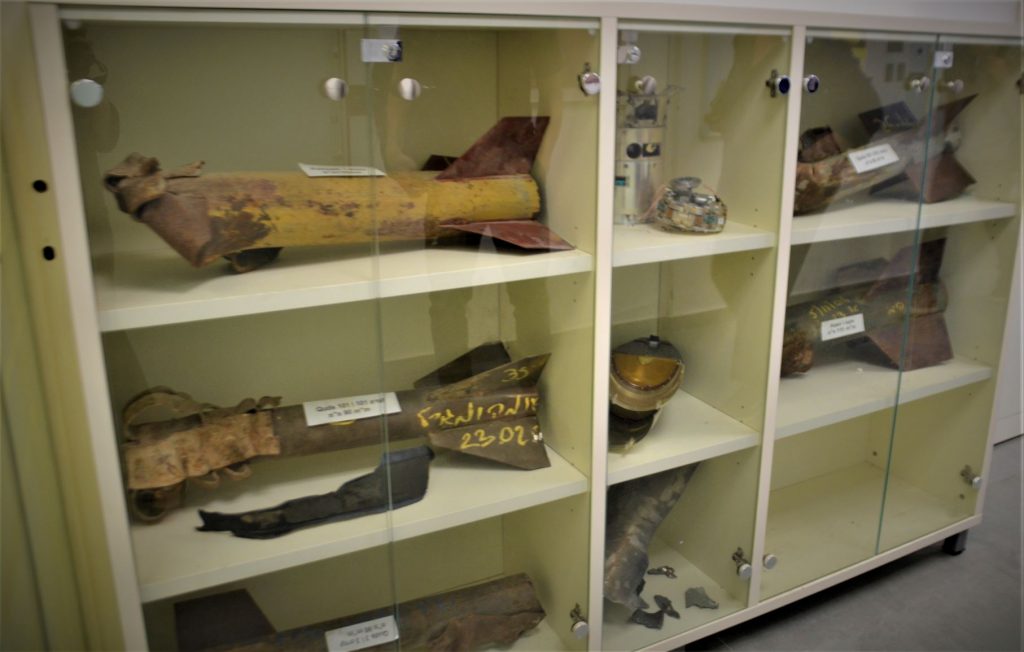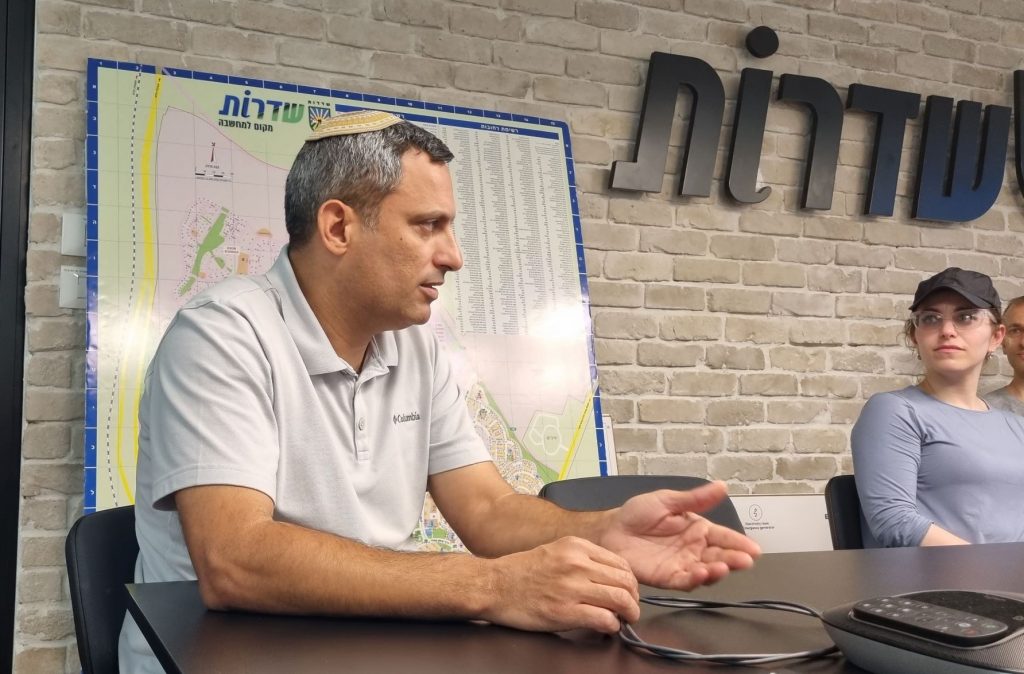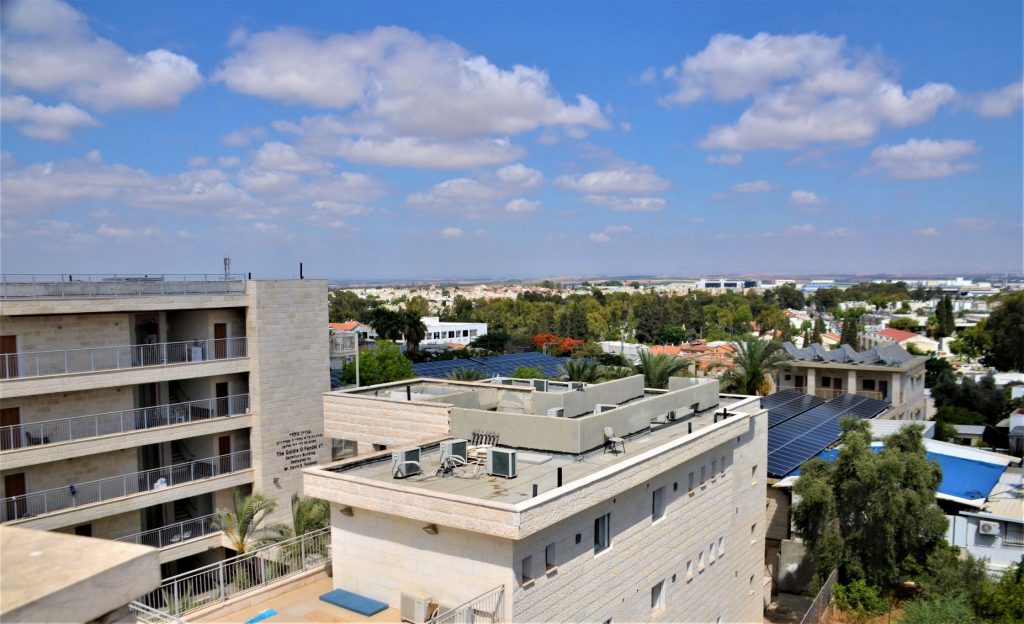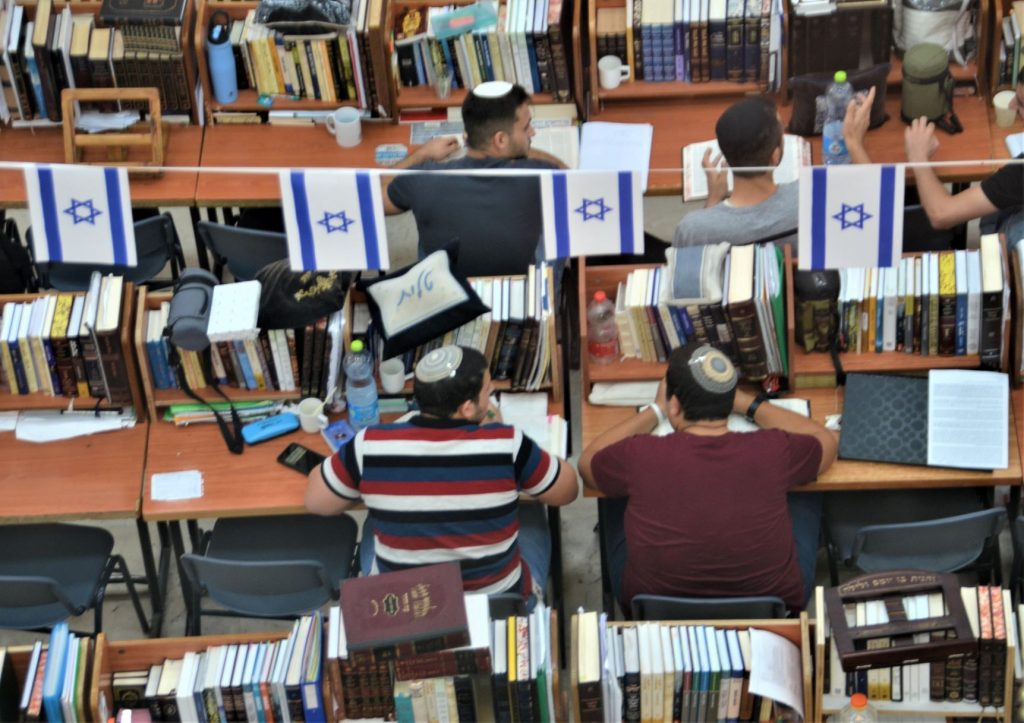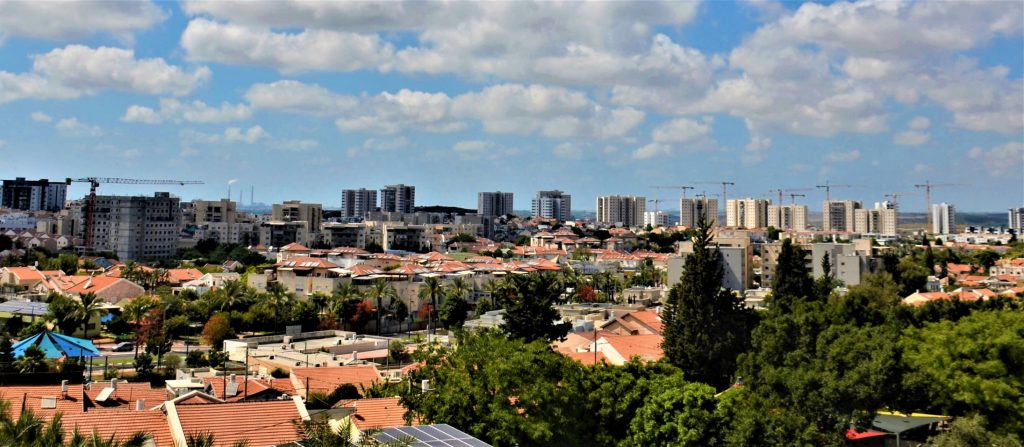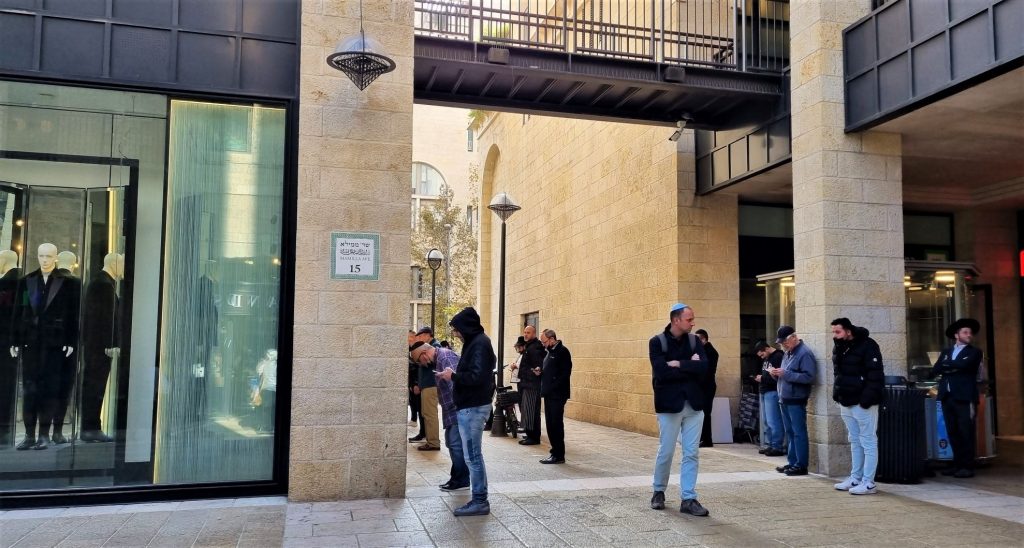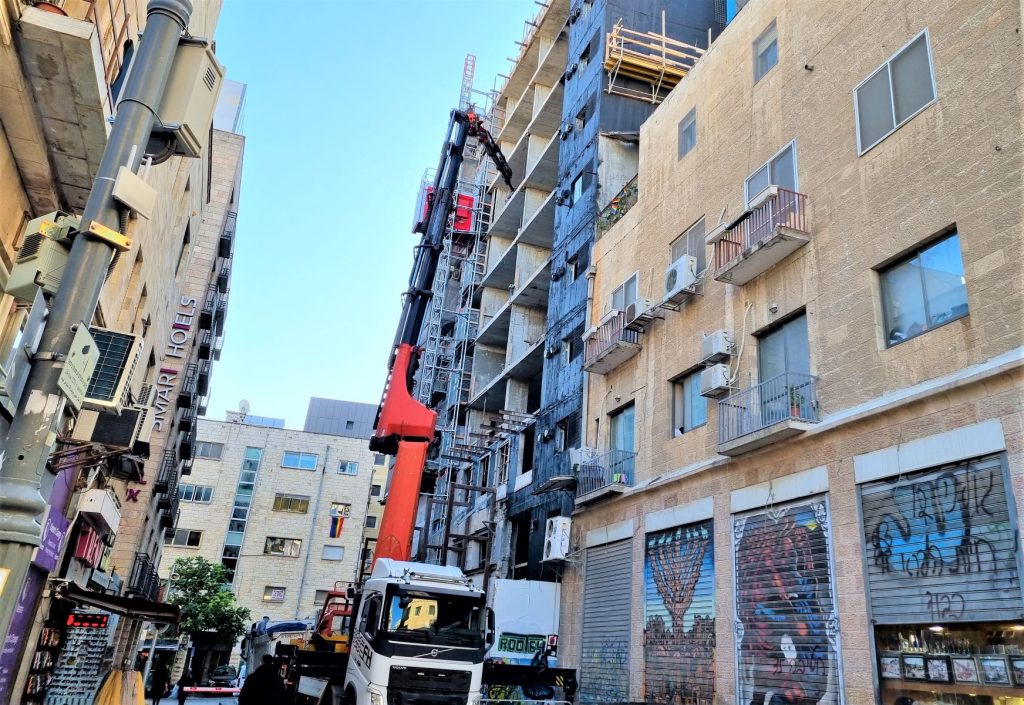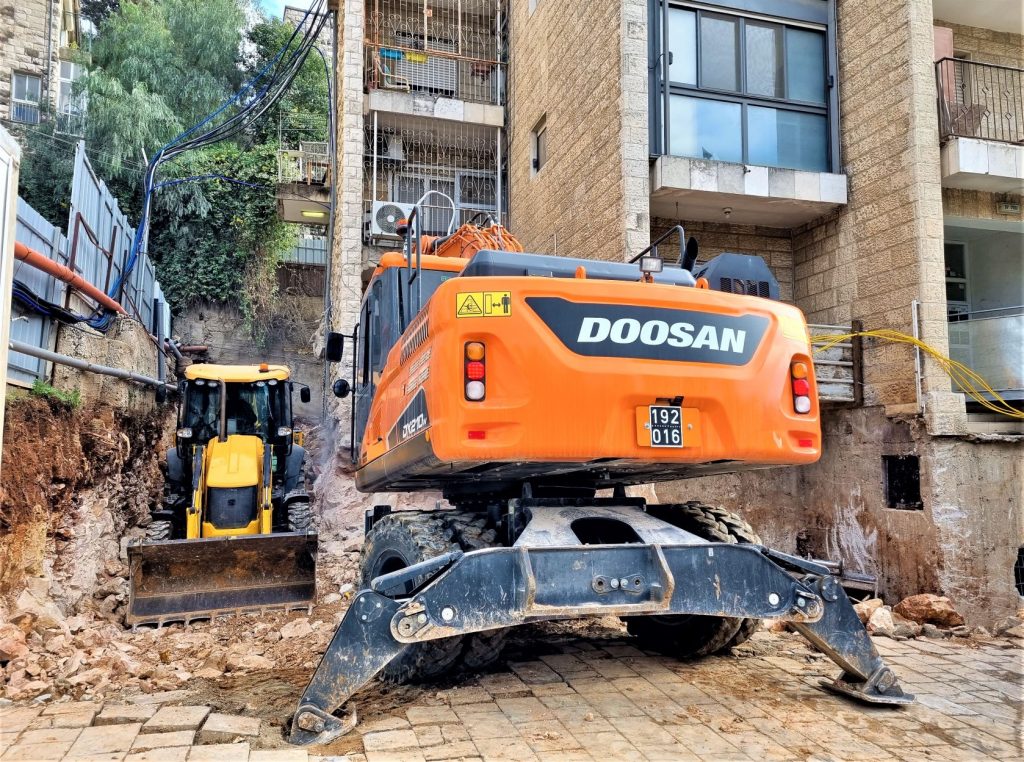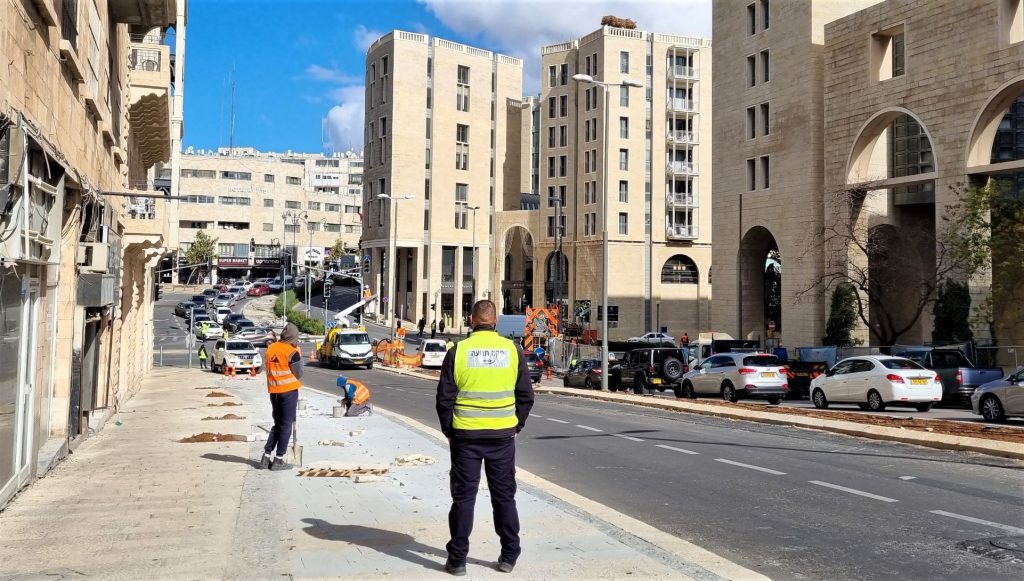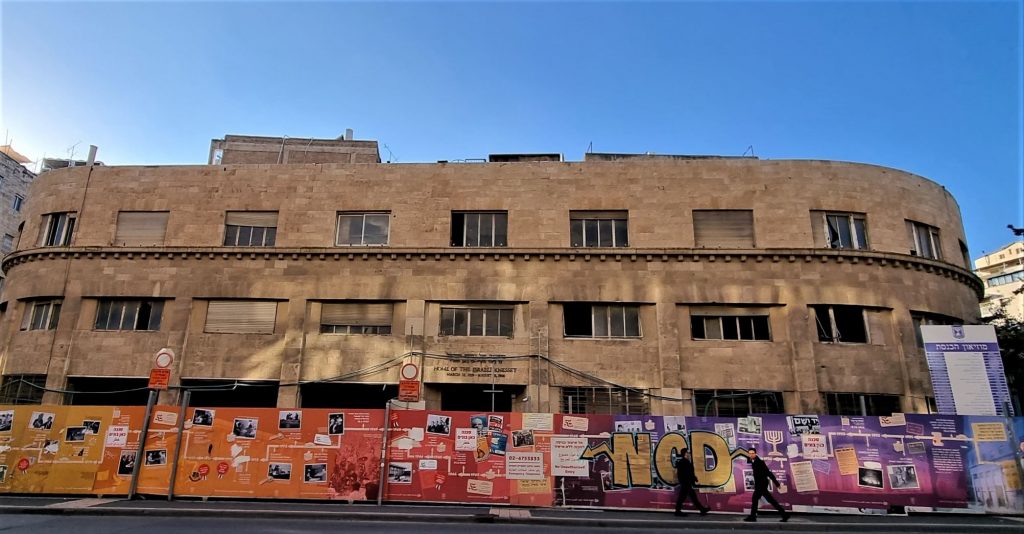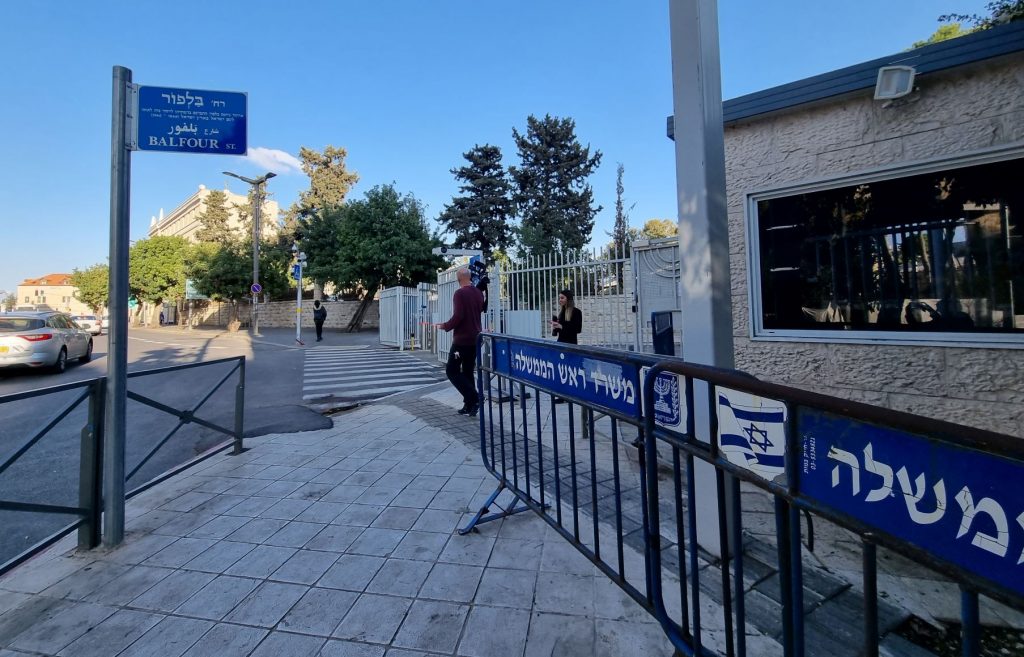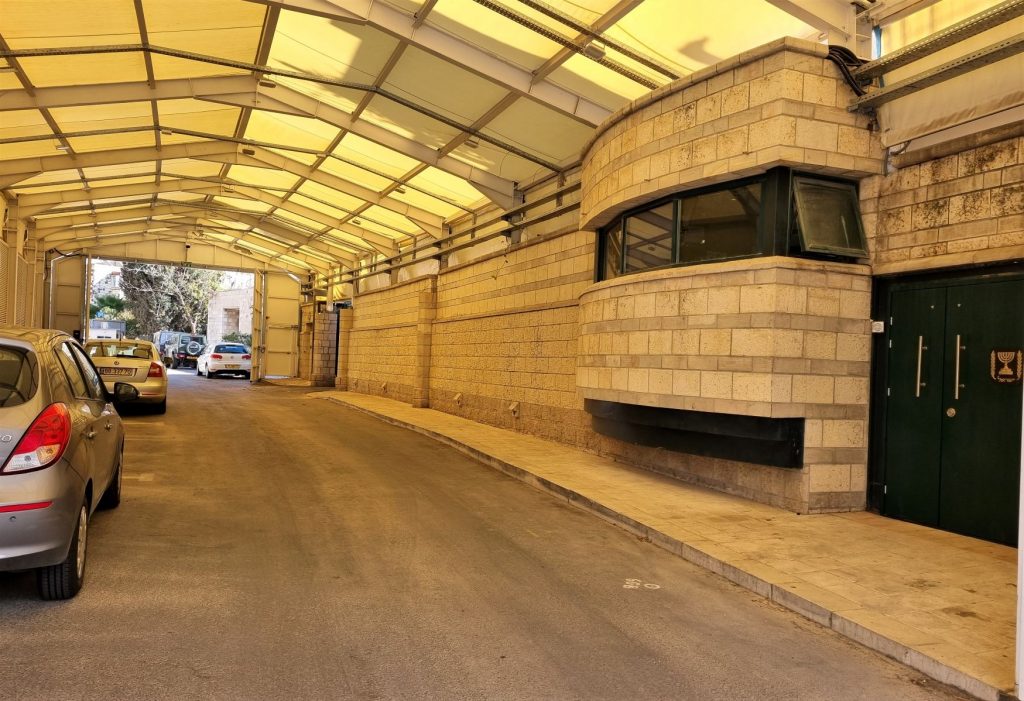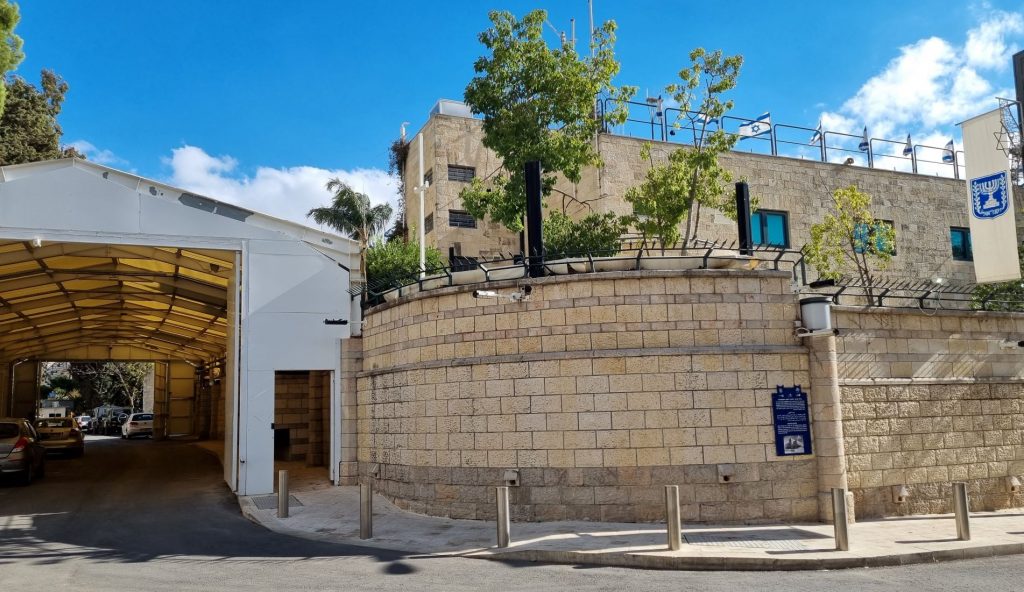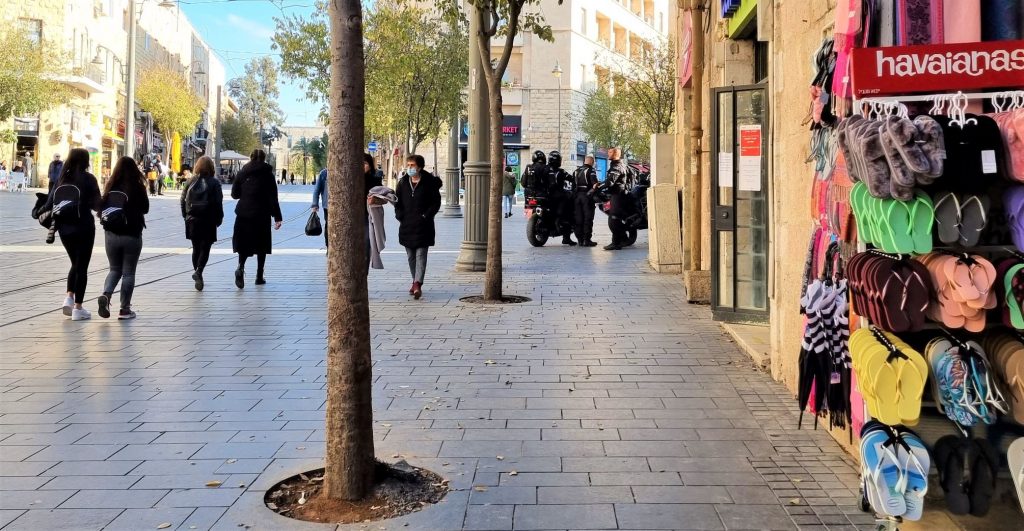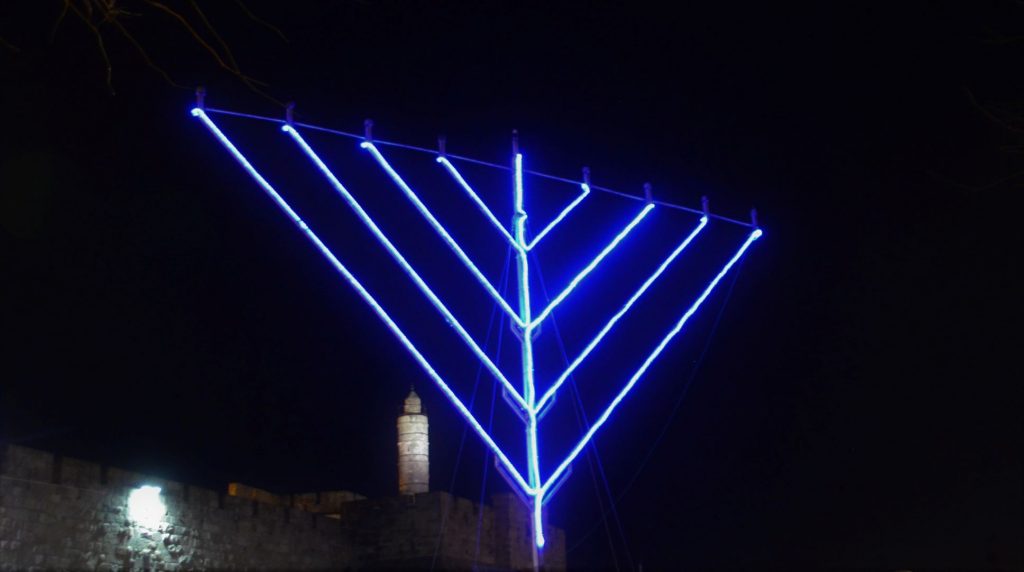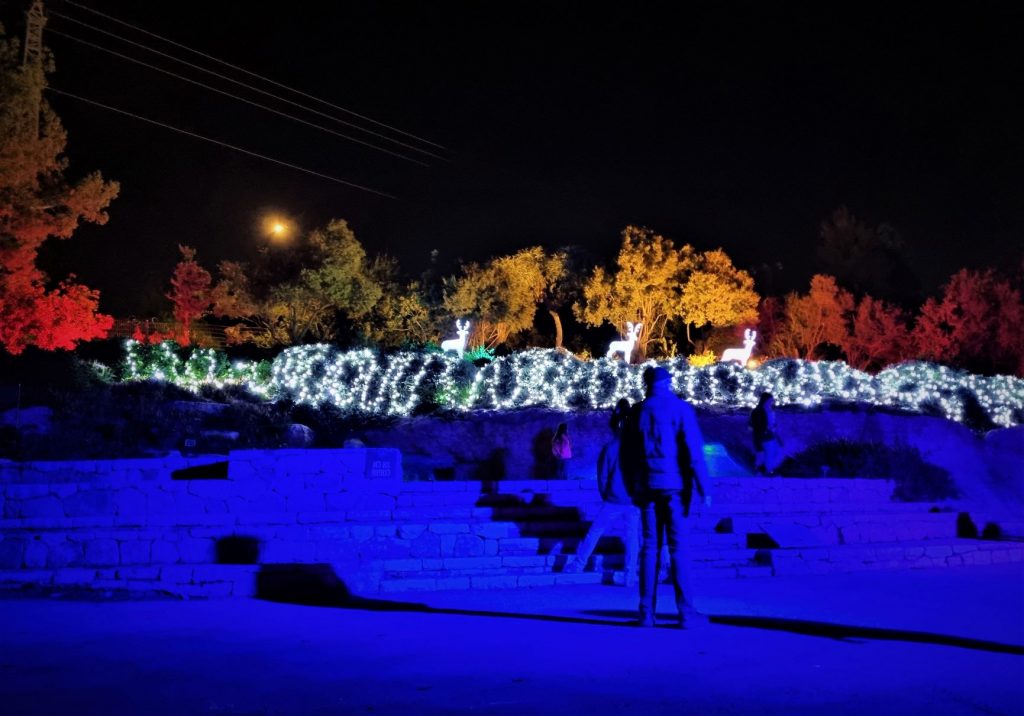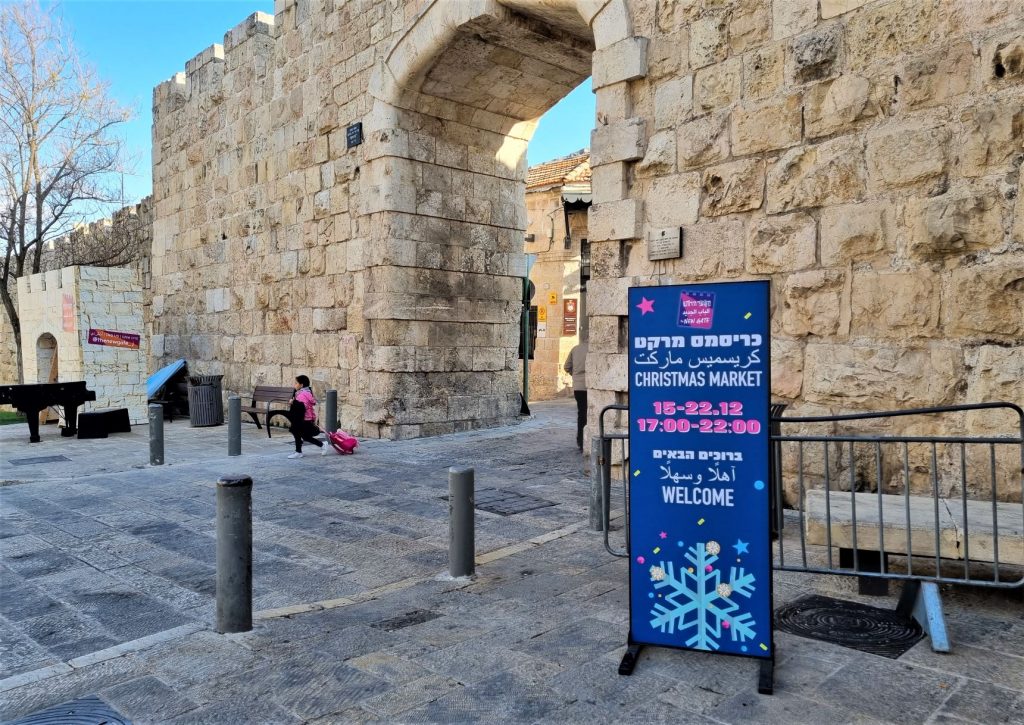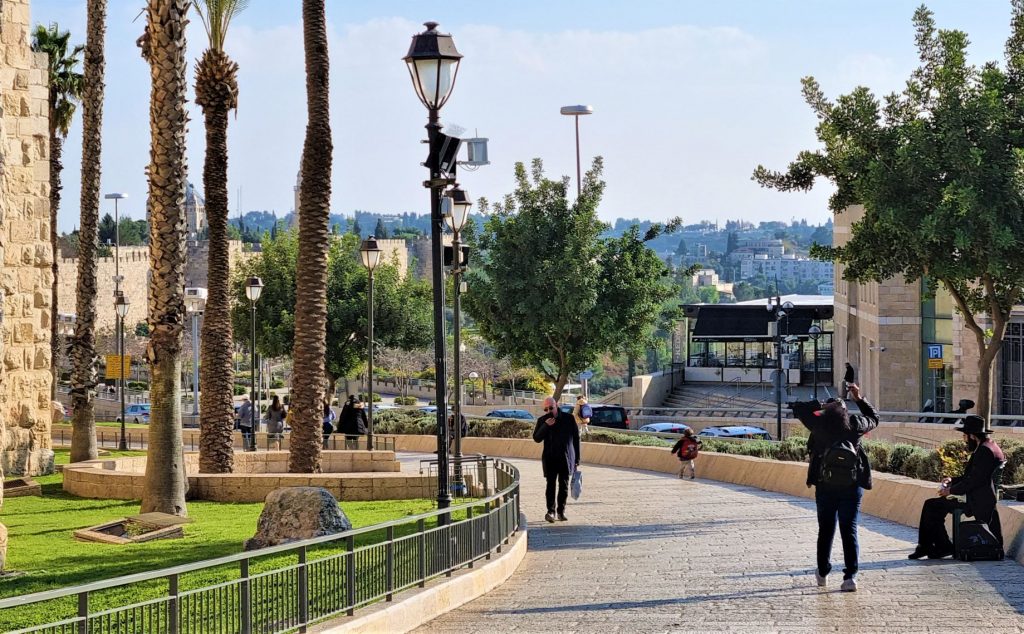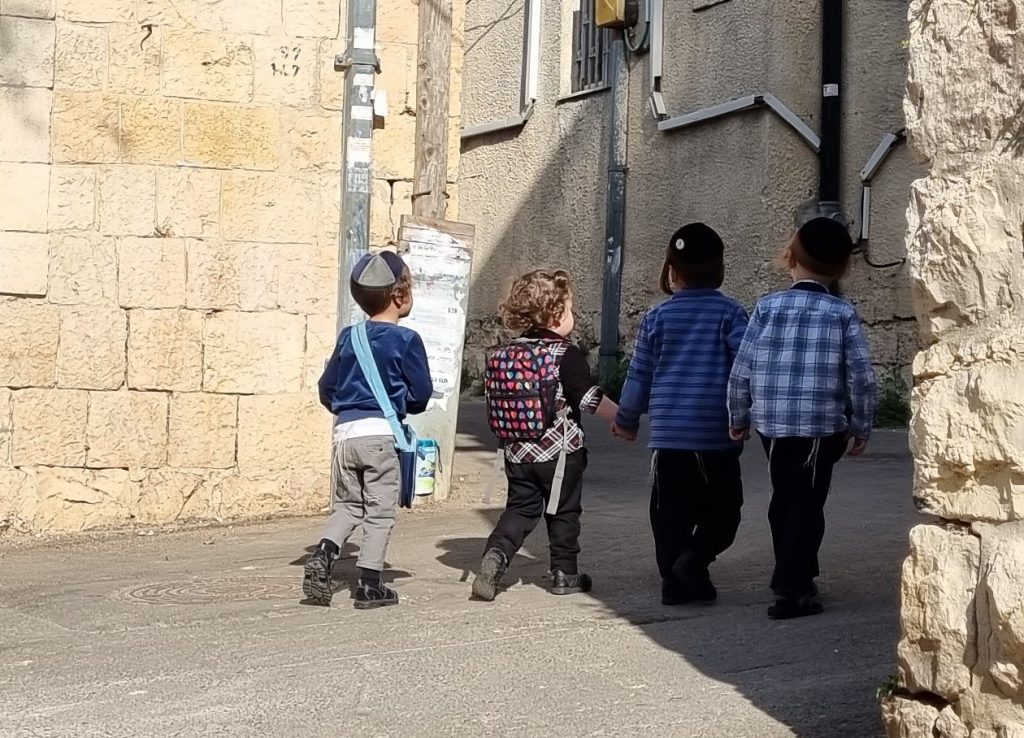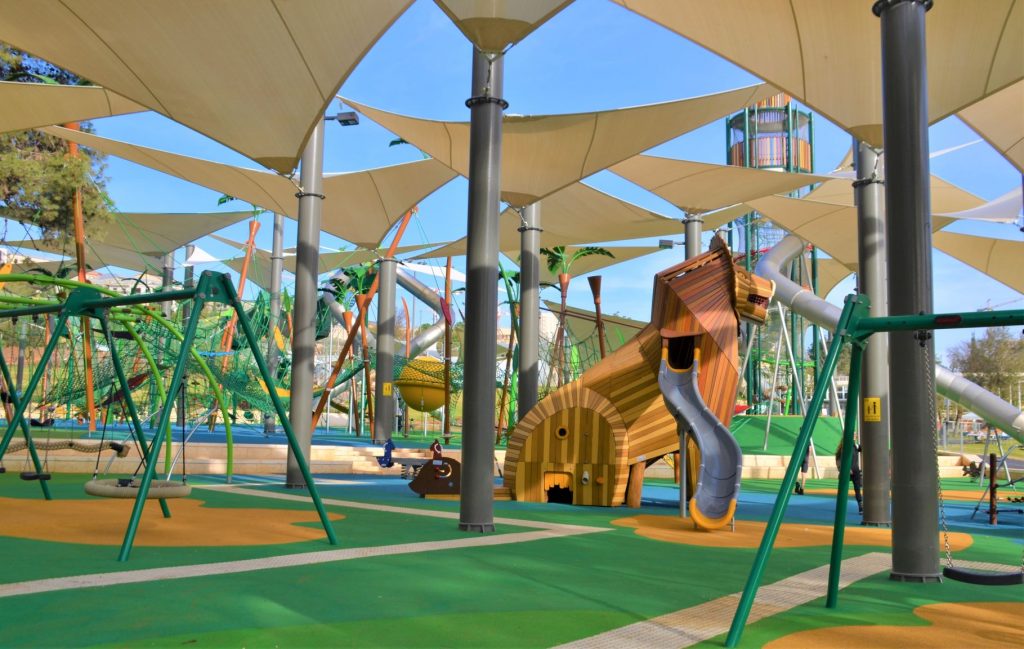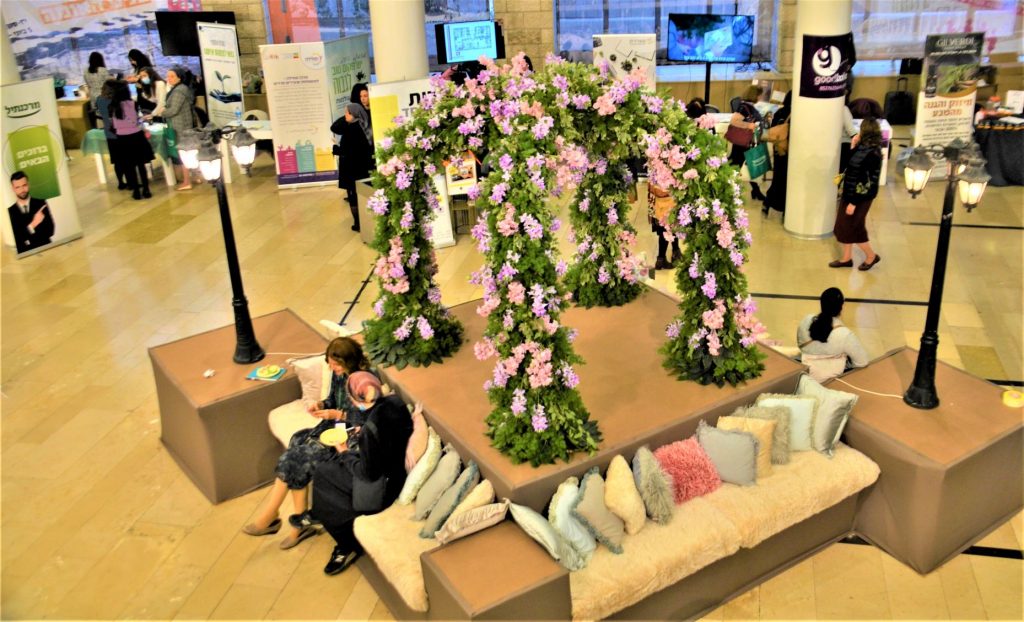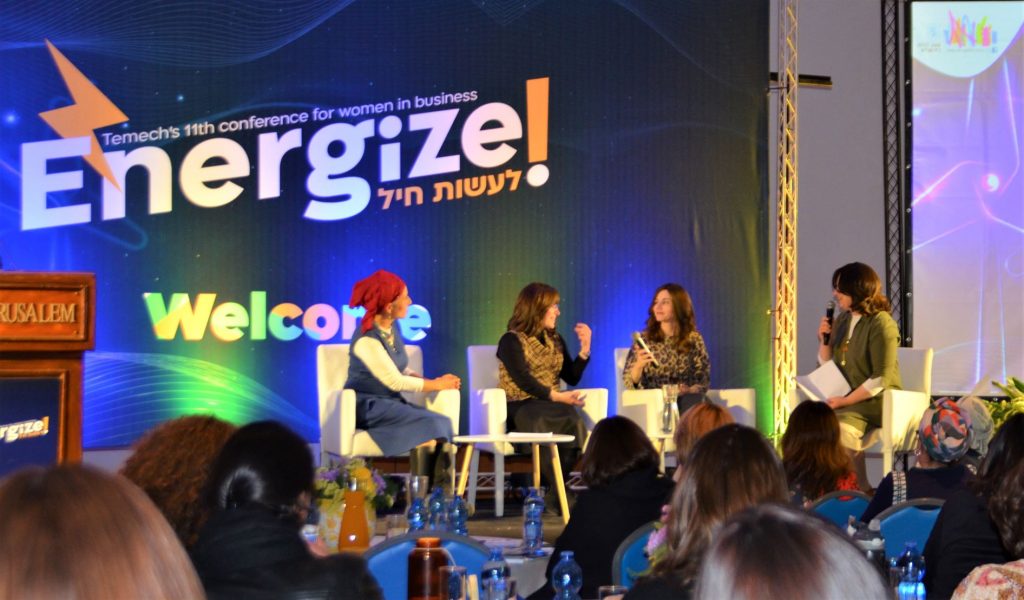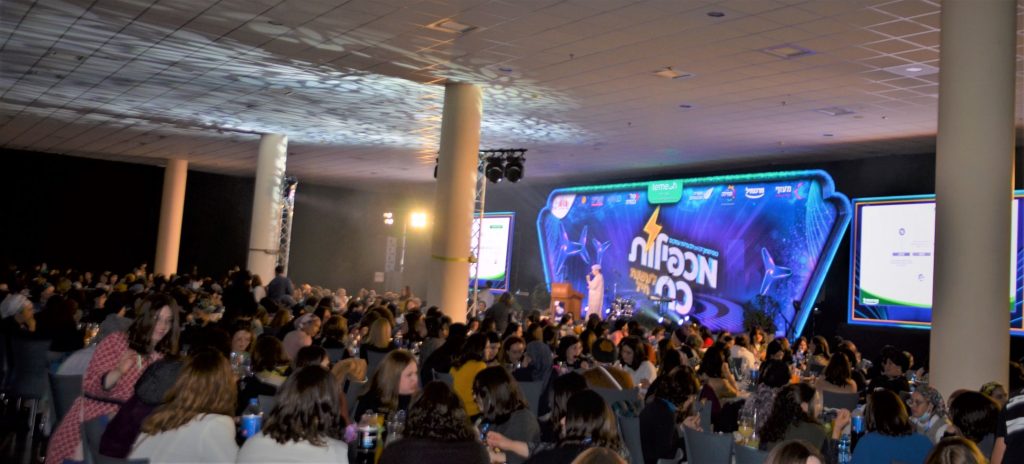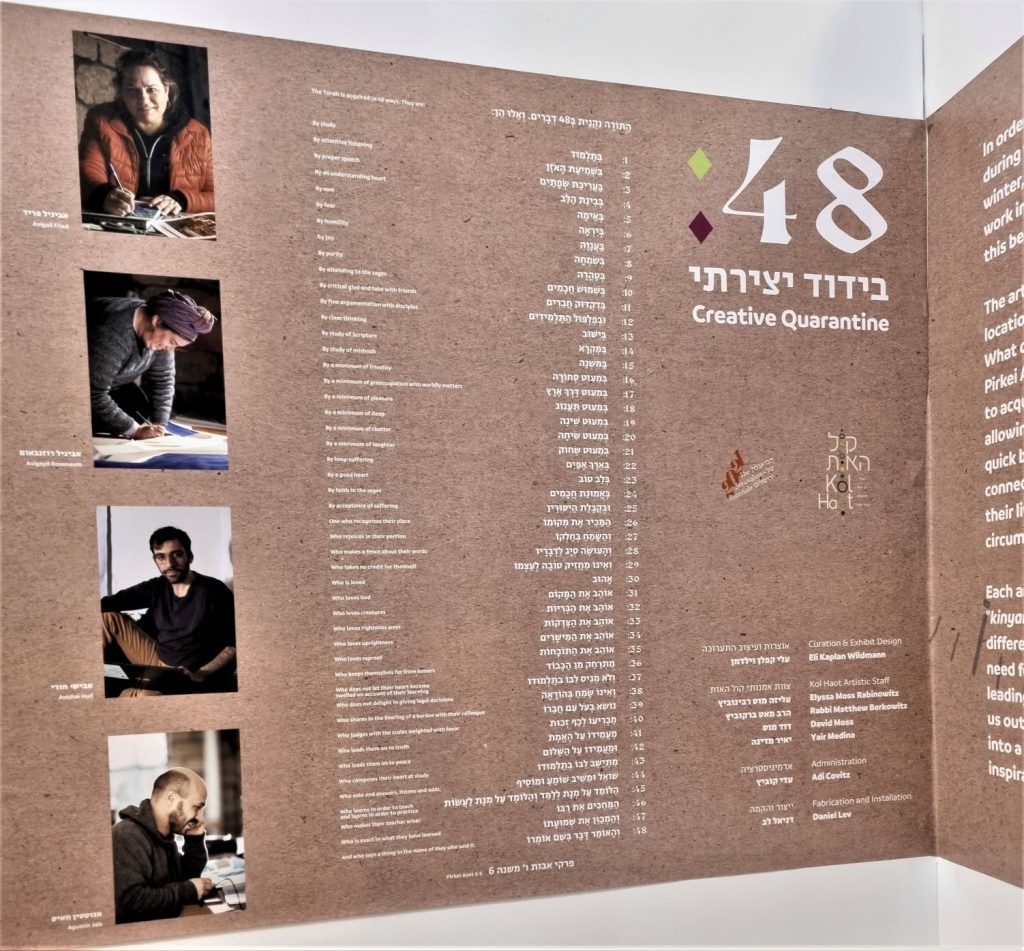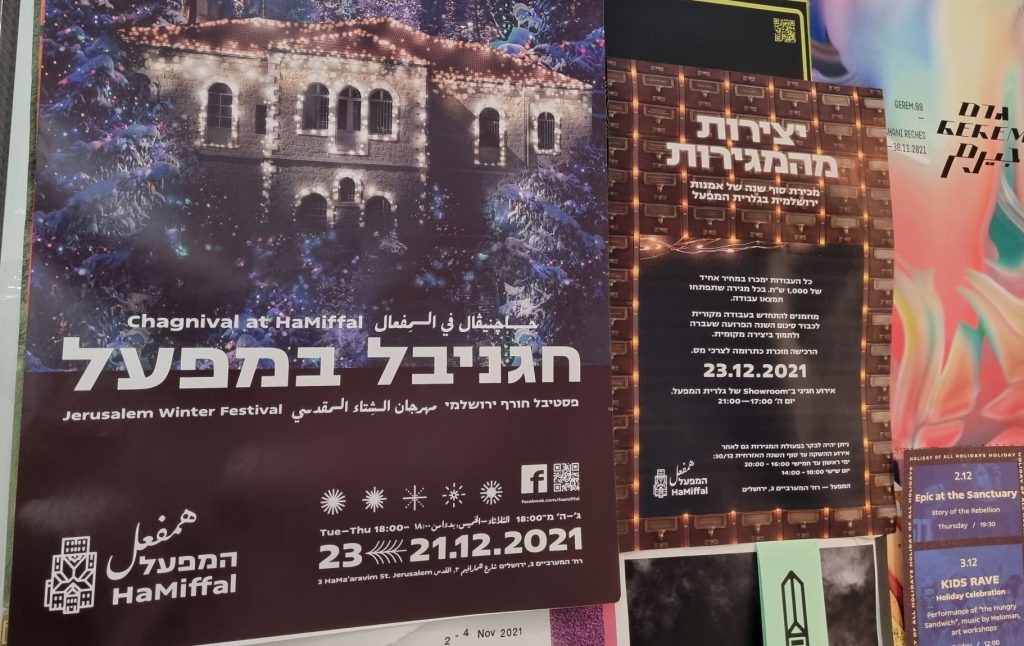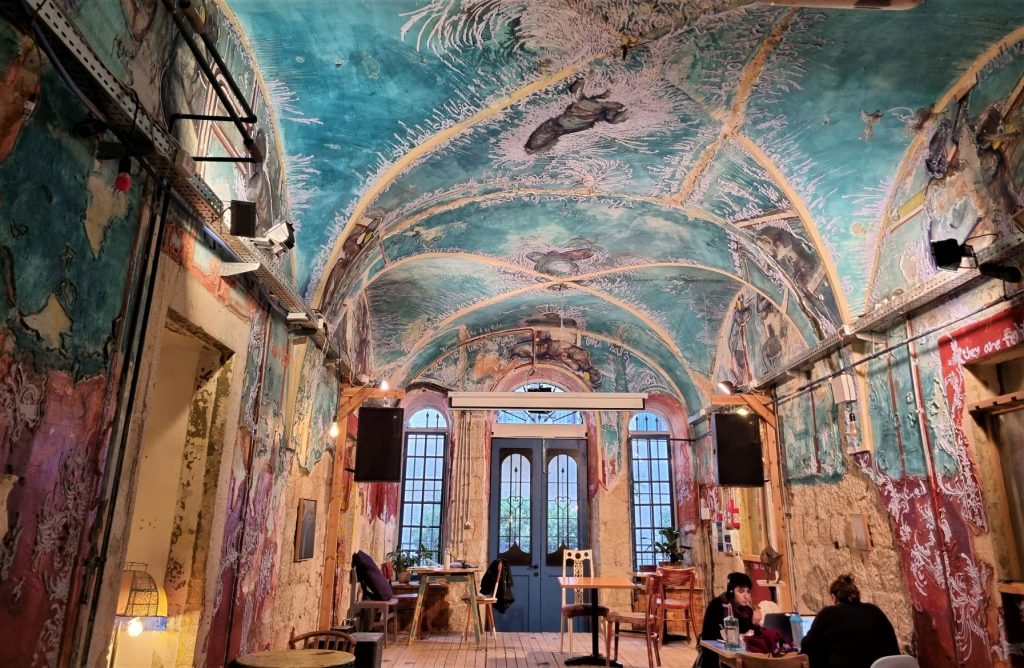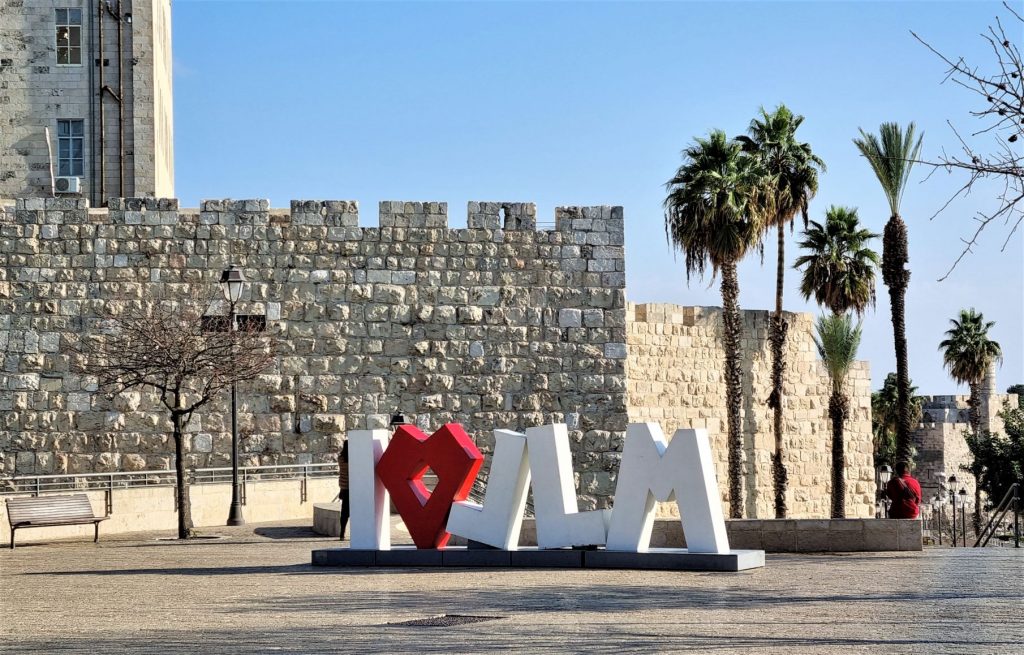As usual, things were happening in Jerusalem, Israel, and on the Jerusalem streets–good things that don’t make headlines.
With the Shavuot holiday starting on Wednesday night, tens of thousands of visitors were arriving from around the world to celebrate.
Shavuot time is also when the end-of-school-year events are held. Universities hold ceremonies for graduates and doctoral presentations.
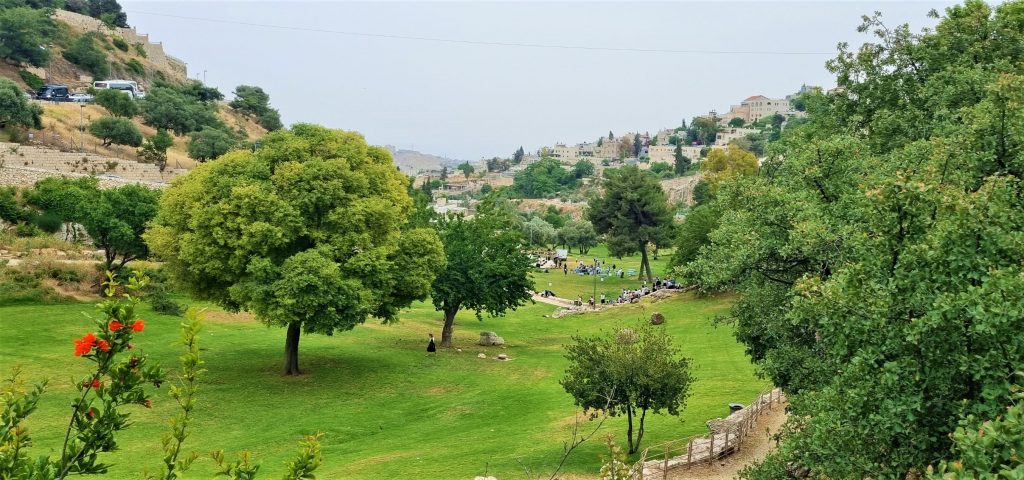
However, my week began with a somewhat smaller-scale end-of-year event in the Hinnom Valley across from Jerusalem’s Old City.
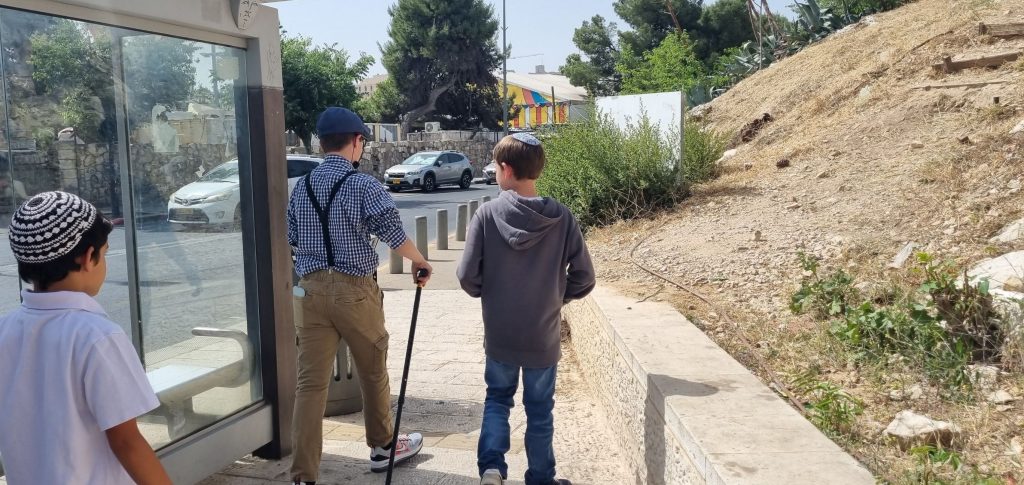
Led by student guides, we left First Station, crossed the road, and went up the hill using those not-quite steps on the right side of this photo.
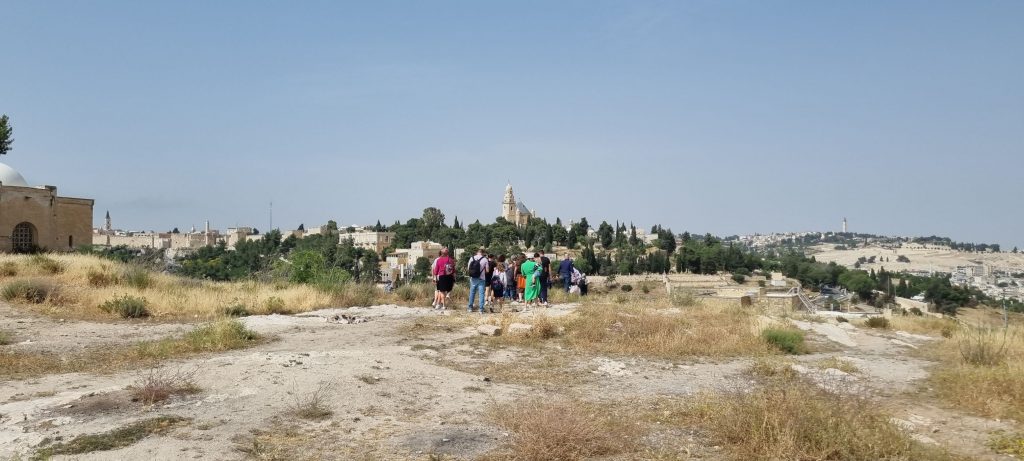
I had wanted one day to climb up to the lookout spot called Givat HaTakanah, Bible Hill, a popular photography venue. Here we were with costumed students leading the way and making dramatic presentations for their families on the history of these historic sites.
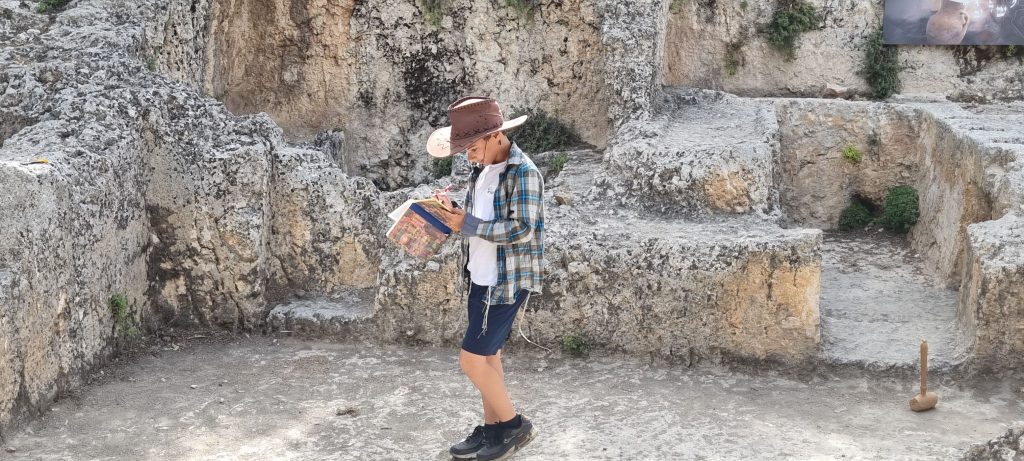
Going down a less steep path we arrived at one of the most fascinating sites near the Begin Center, Ketef Hinnom again, but with a younger guide.
In this burial area from the First Temple period, the finds included silver amulets engraved in old Hebrew with the text of Birkat Kohanim, the Priestly Blessing.
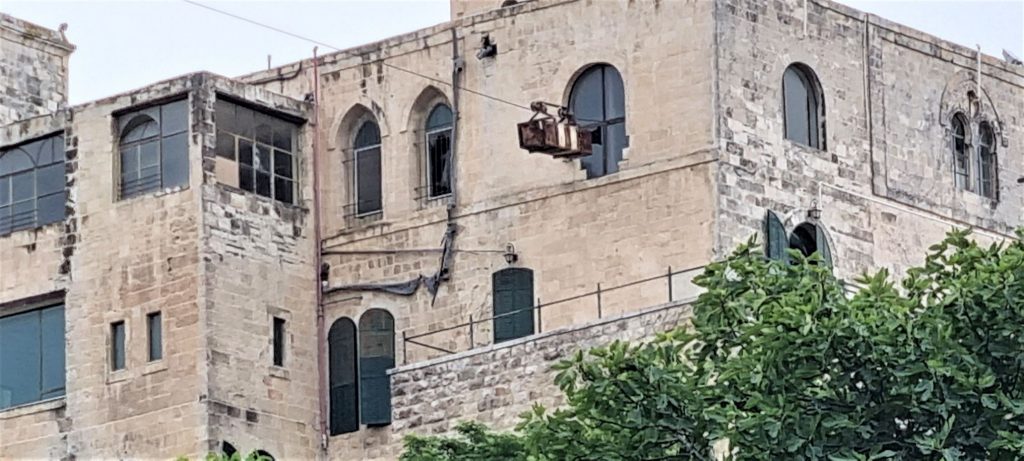
Walking thru the valley, one can see the bucket attached to the wire across, where food was sent to the Old City under siege in 1947.
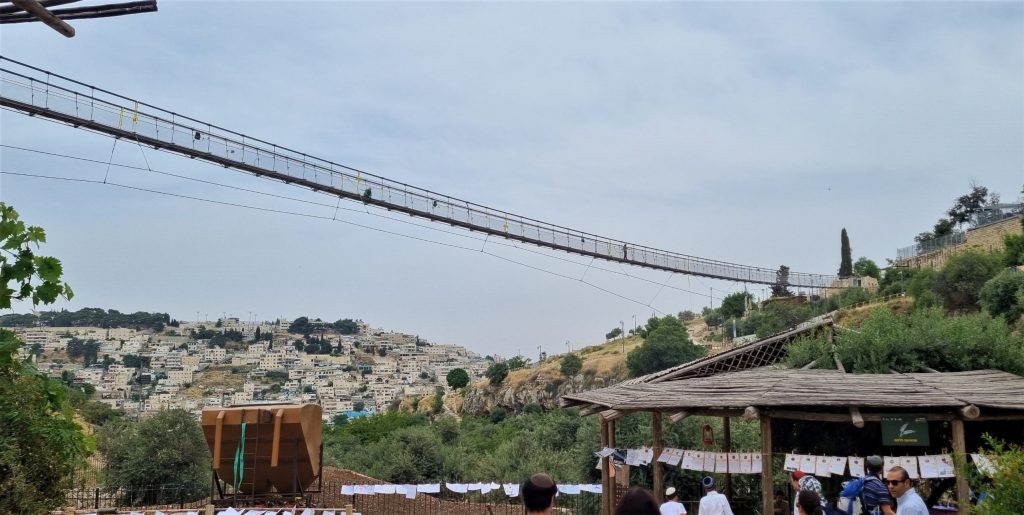
Walking further, here is a closer look at the suspension bridge shared two weeks ago. The end-of-year party with loud music, ended hours later, but I had already gone home.
Only in Jerusalem can the past and present and future come together on-site, not just a story acted out on a stage.

This week there was more music at Beit Hanasi, as the Israeli President accepted credentials from new Ambassadors to Israel.
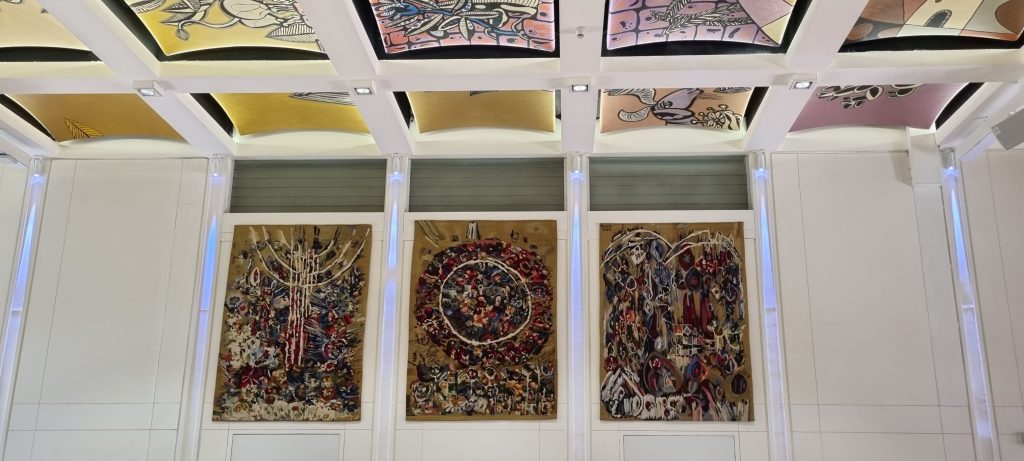
An Israeli artist born in the USSR, Moshe Tamir, made these woven tapestries, a triptych, which were recently hung in the main hall – from the left, a menorah, Jerusalem, and tablets of the Ten Commandments.

After presenting credentials, each delegation met privately with the President in off-the-record sessions. The Ethiopian women had such beautifully embroidered garments, I thought I would share one view.
At the repeated official ceremonies, the IDF band had a lot of music to prepare. Here’s a short video with some of the music and flags.
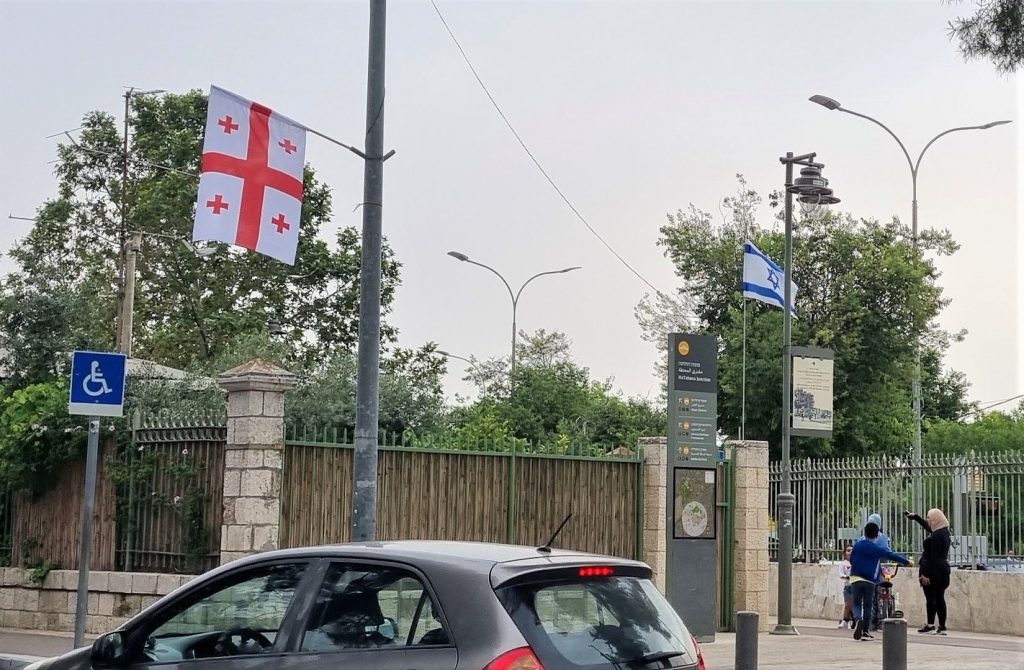
These red and white flags were also up this past week. Not for an official arrival of a President, but for the elaborate Georgian (as in the country, not US state) Day celebration held in Jerusalem at the YMCA.
At the invitation of the President of Azerbaijan, President and Michal Herzog are off this week for a state visit to Azerbaijan, a Shiite Muslim country bordering Iran.
During the visit, there is to be a signing ceremony for a cooperation agreement in the field of health between the State of Israel and Azerbaijan.
Time to stop negative Israel is isolated and doomsday headlines?
Also this past week, at a venue near the Old City walls, was a special pre-Shavuot event for women.
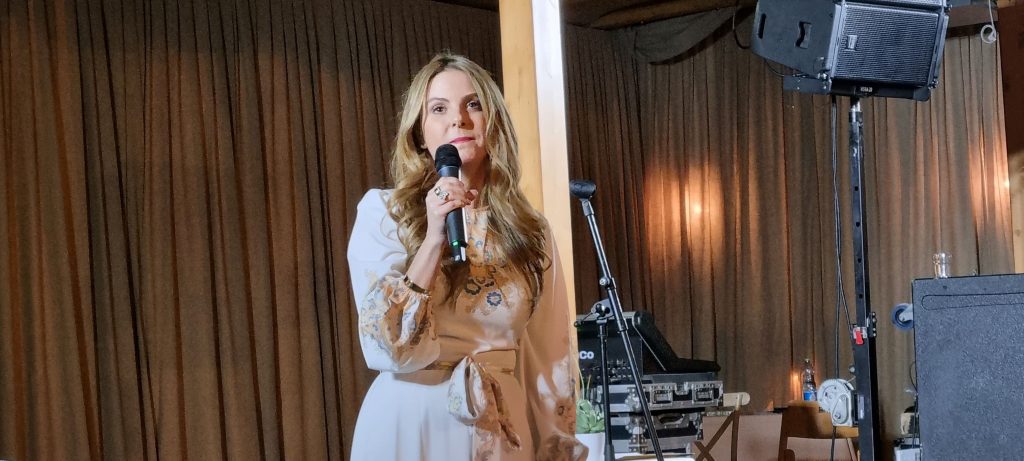
‘Find your Waze, From the A for Anxiety to Aleph of Anochi‘ was the headline for a talk by Michal Oshman. You can find her Ted Talk online, she shares quite a personal journey and story.
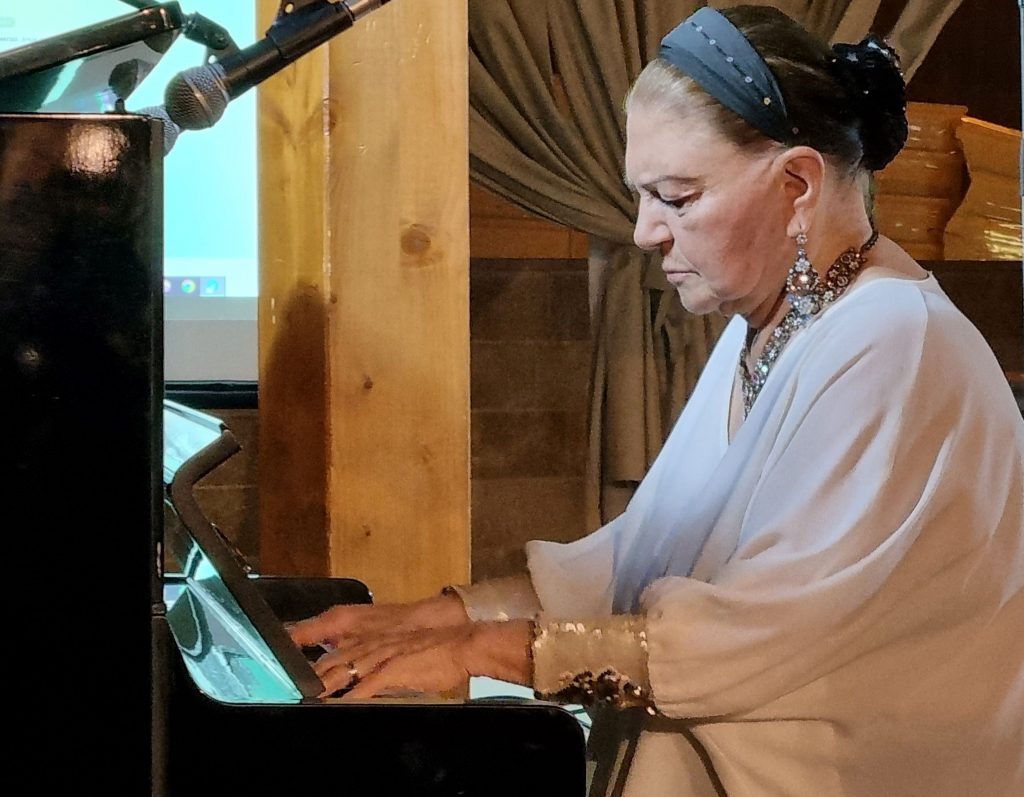
Pianist Okana Yablonskaya was a highlight of the program with her exceptional musical interludes in the program.
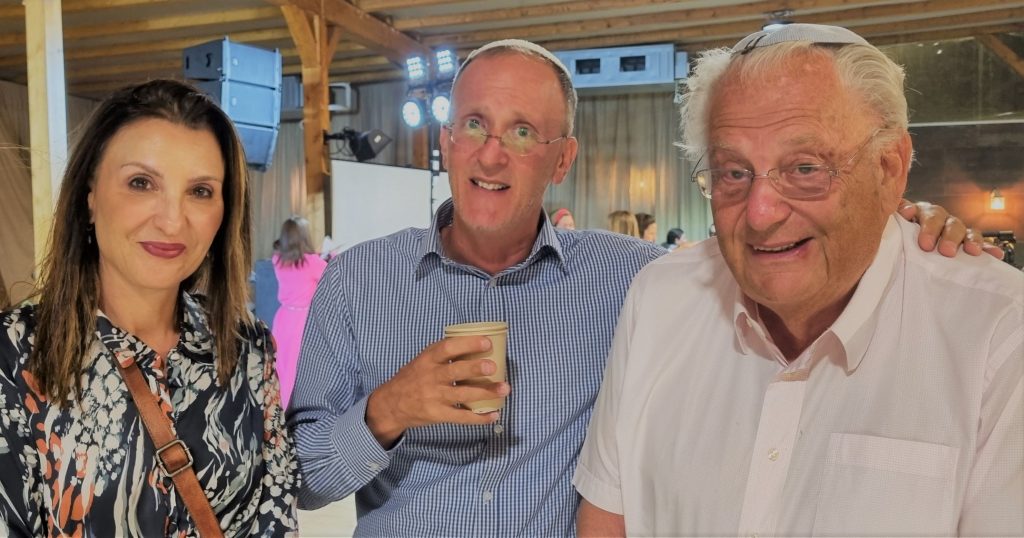
Deputy Mayor Fleur Hassan Nahoum was a guest speaker. I found it interesting that Leo Dee’s father knew Fleur’s father and uncle years ago.
And Rebbitzen Chana Canterman of Chabad Talbiyeh who organized and hosted the program, knew Lucy Dee from when she was a girl in London.
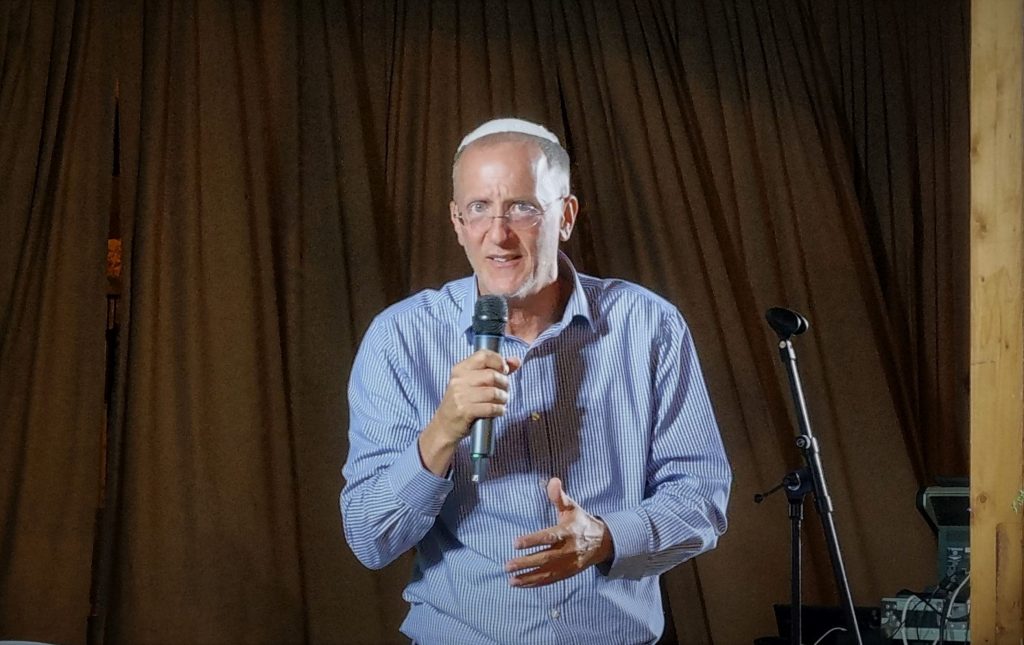
In his remarks, Rabbi Leo Dee mentioned the need for “two” – one example, the piano alone needs the hands for beautiful music.
The evening was dedicated in memory of Lucy, Maia, and Rina Dee hy”l.
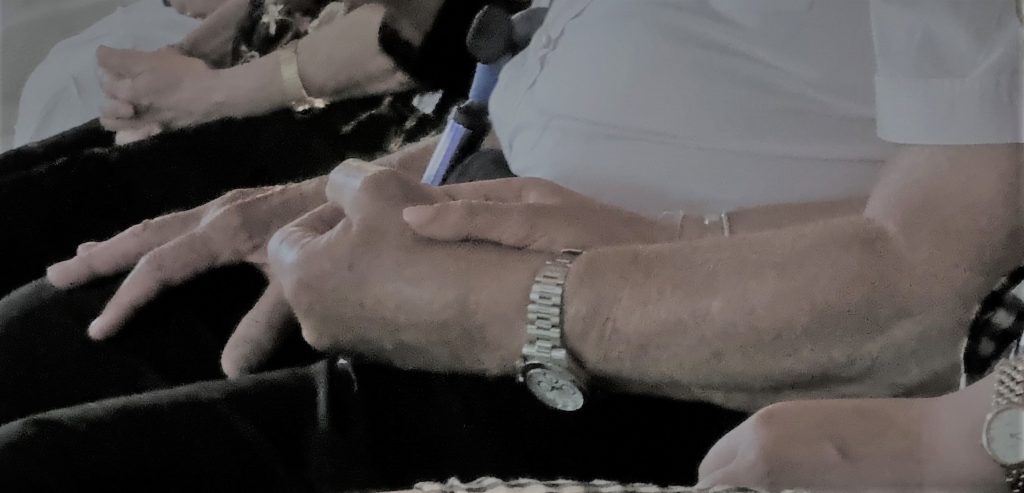
As Rabbi Dee spoke his father and daughter held hands.
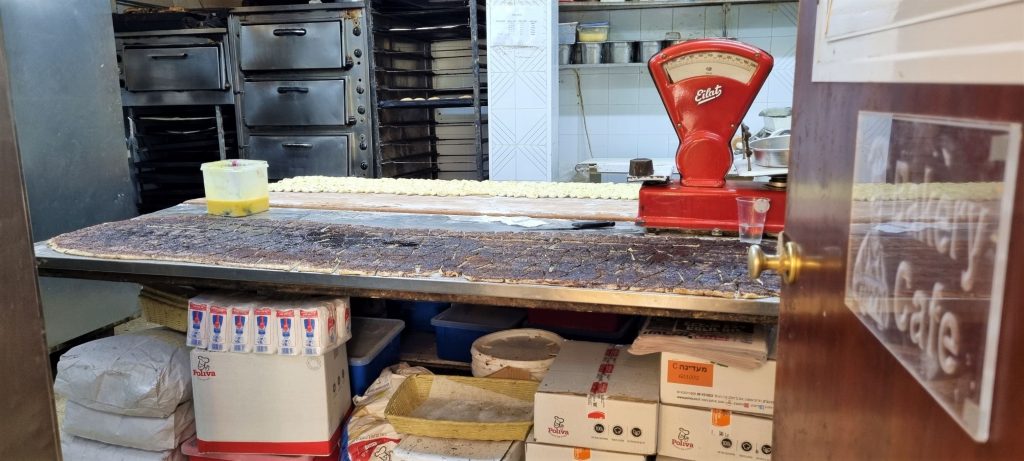
These events were held prior to Shavuot, when bakeries were busy, not only with preparing cheesecakes but sweets by the thousands.

I even made time to do a little baking of my own.
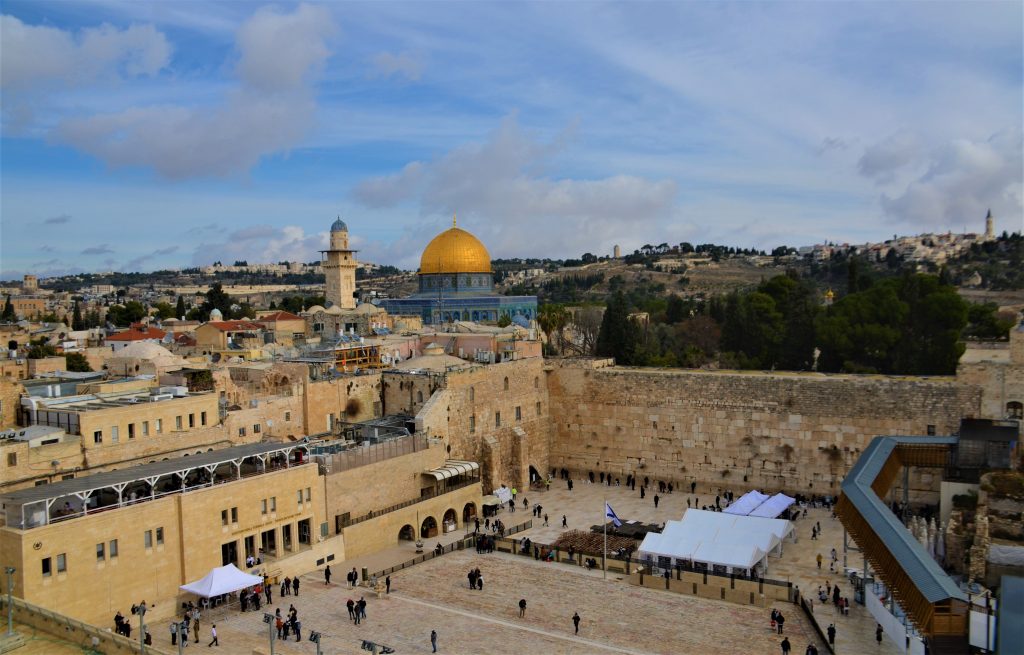
Three years ago with the pandemic, the Jerusalem streets were too quiet.
It’s so good this year in Jerusalem, people arrived from around the world over the holiday weekend, and over 100,000 gathered at the Old City and the Kotel, Western Wall.
Once again people filled the Plaza and the air with musical sounds of song.
